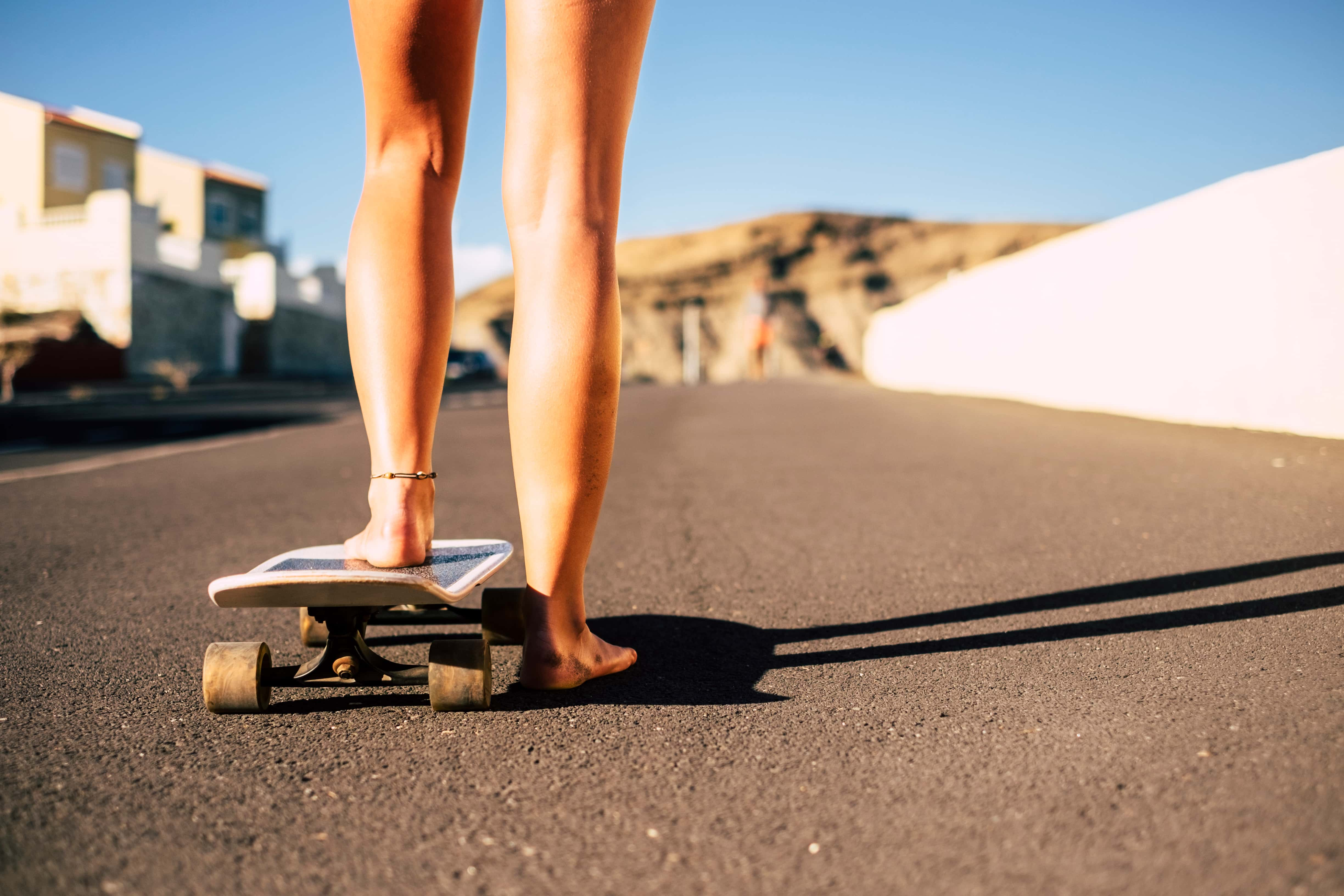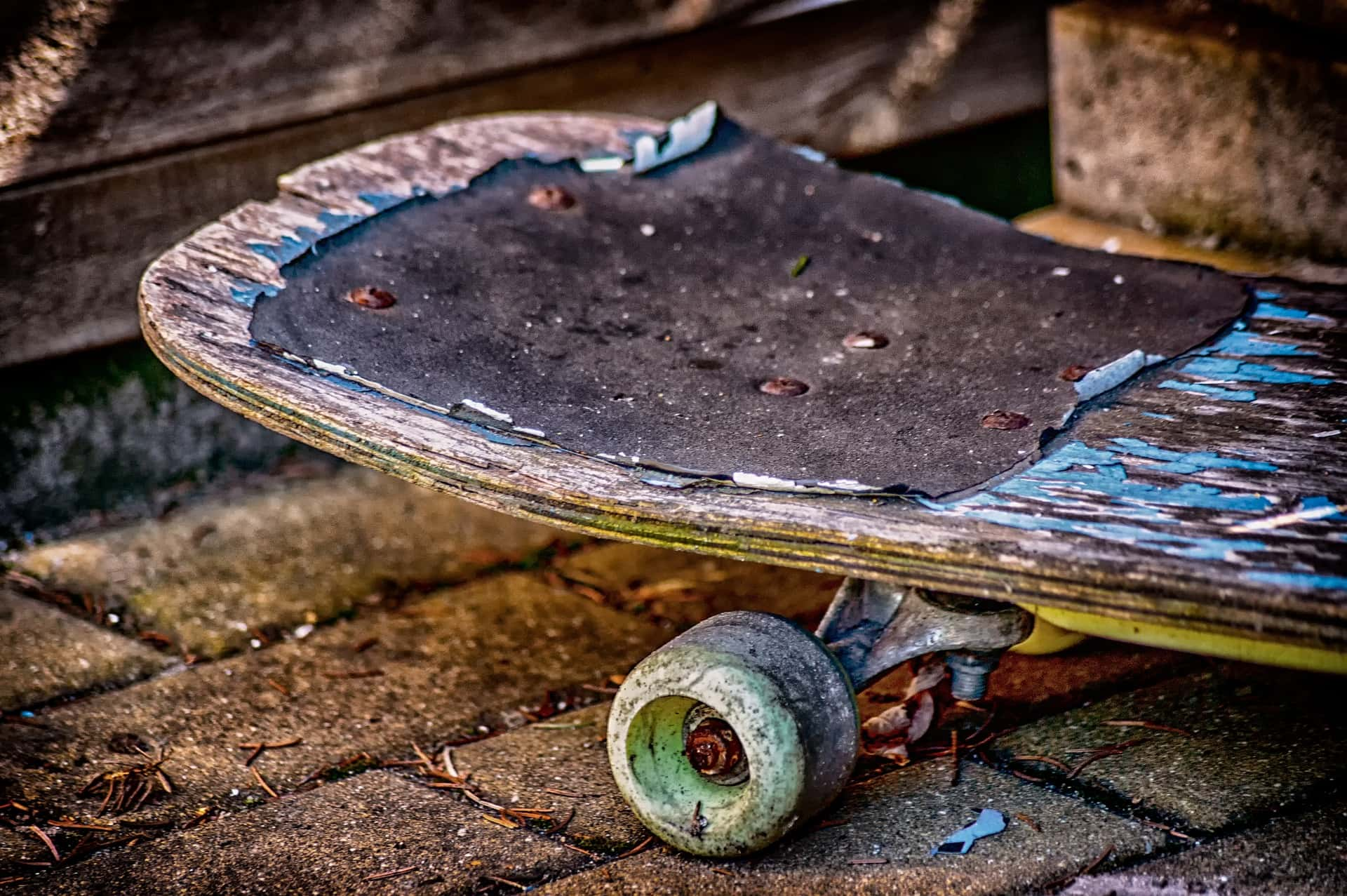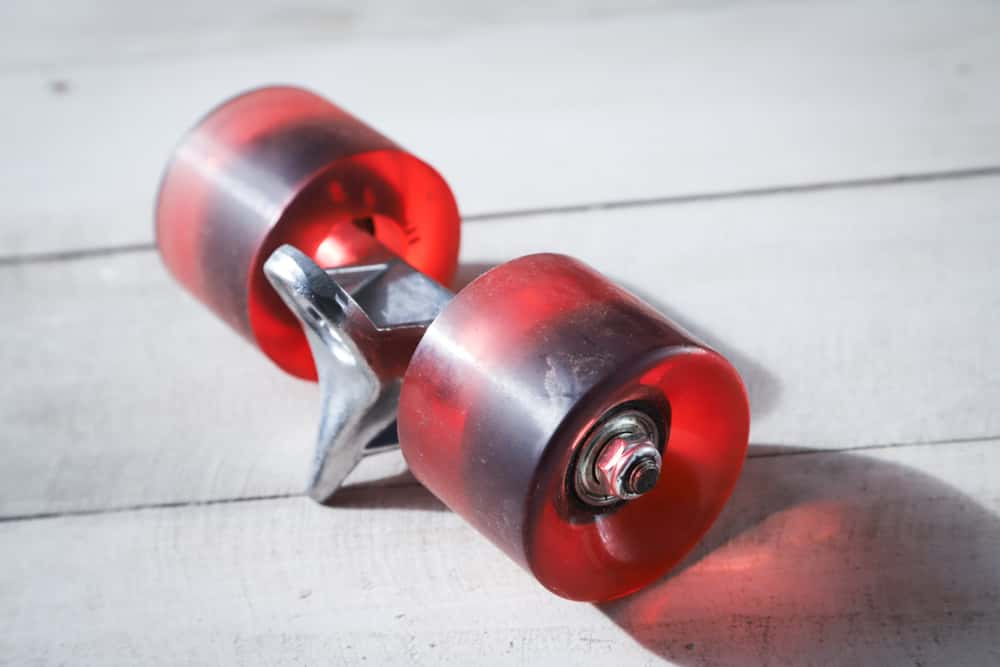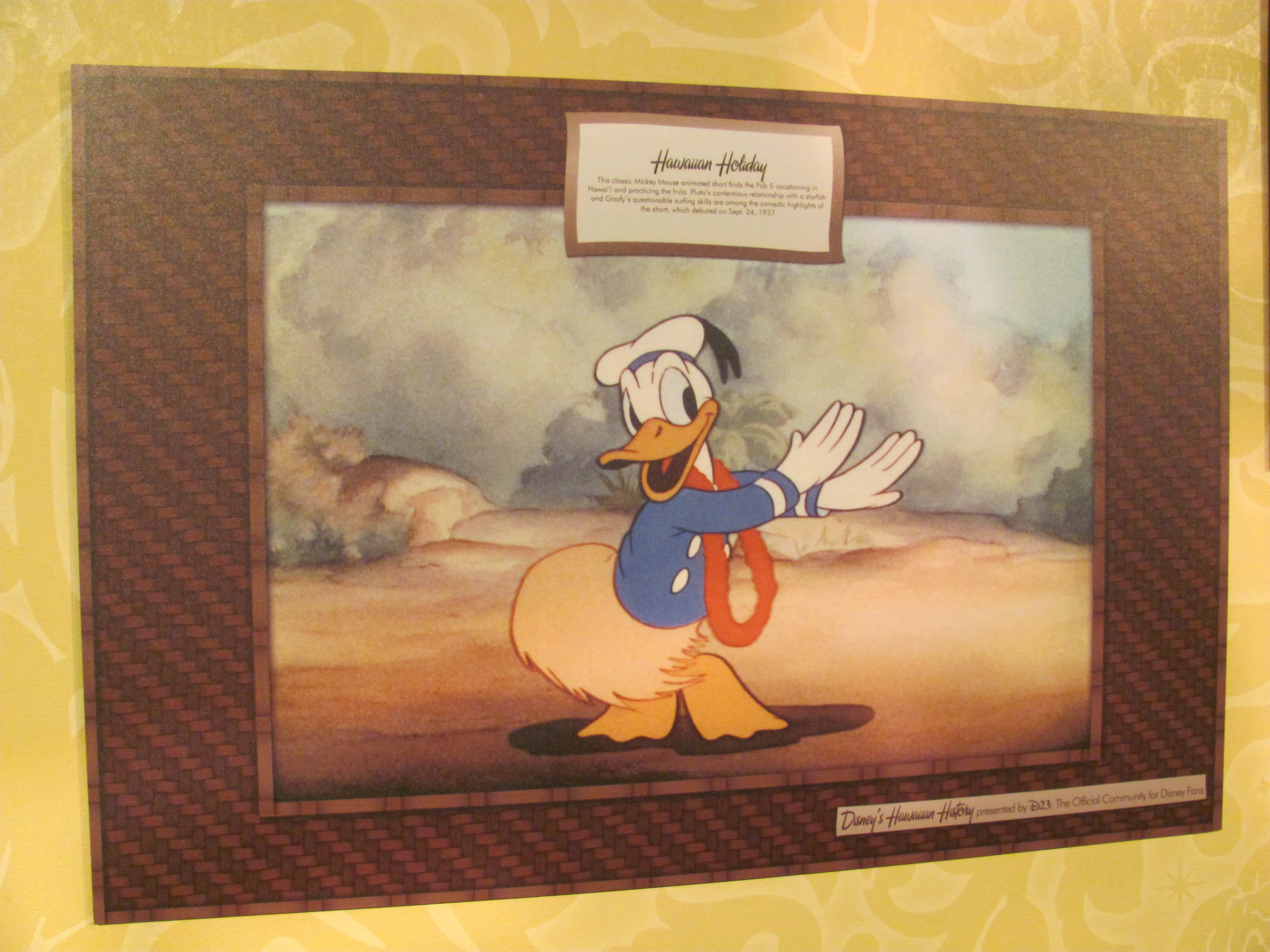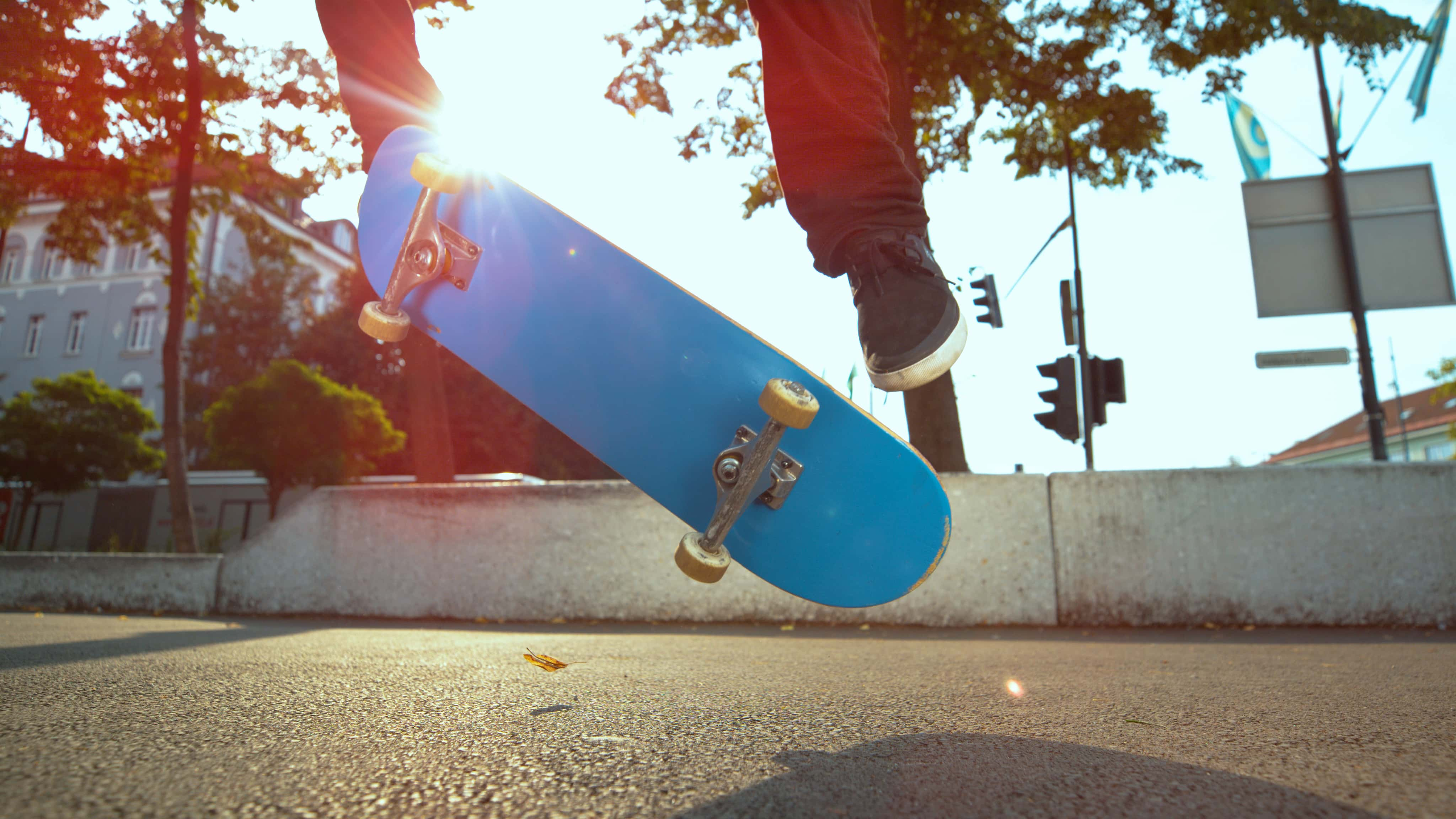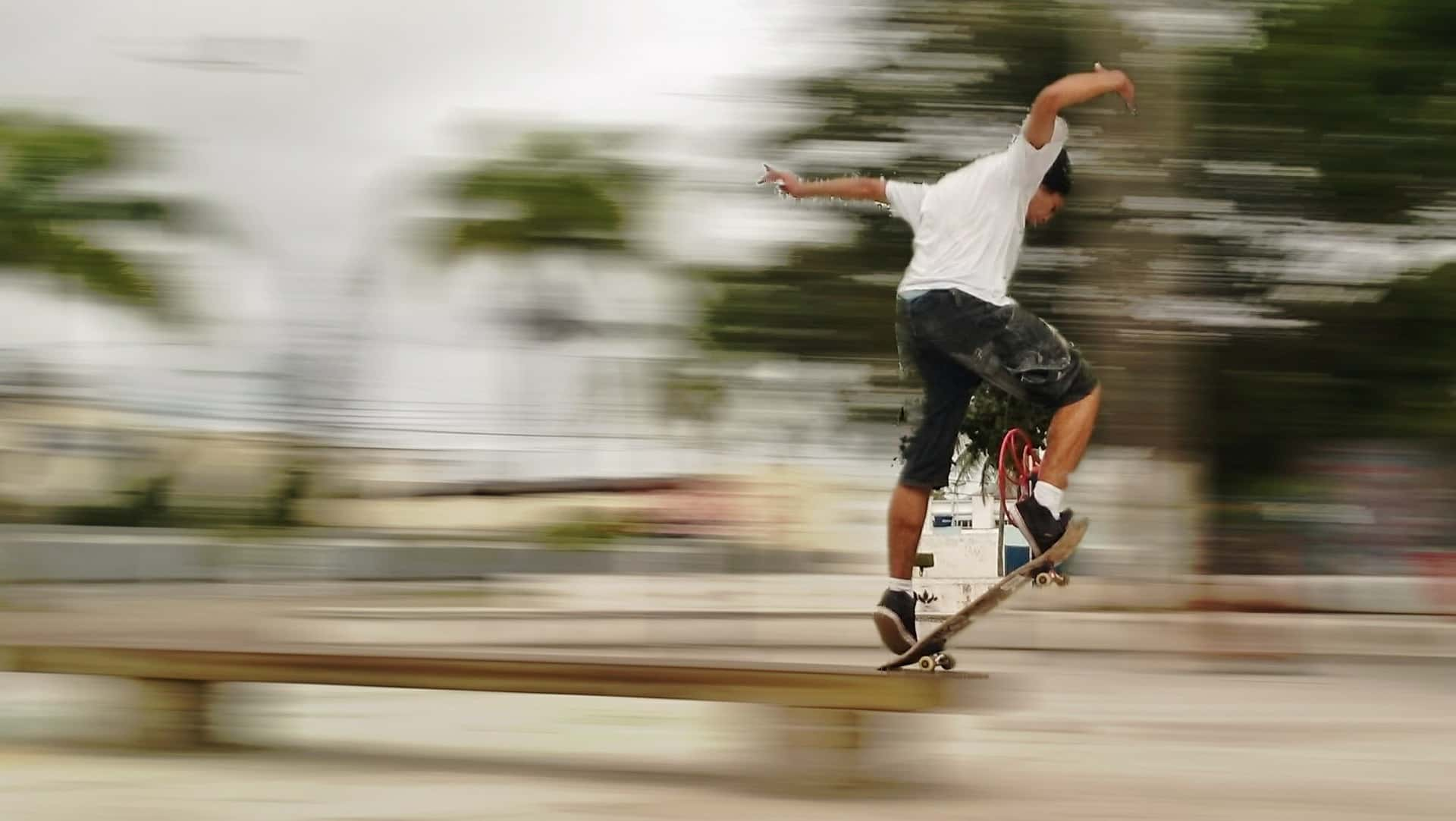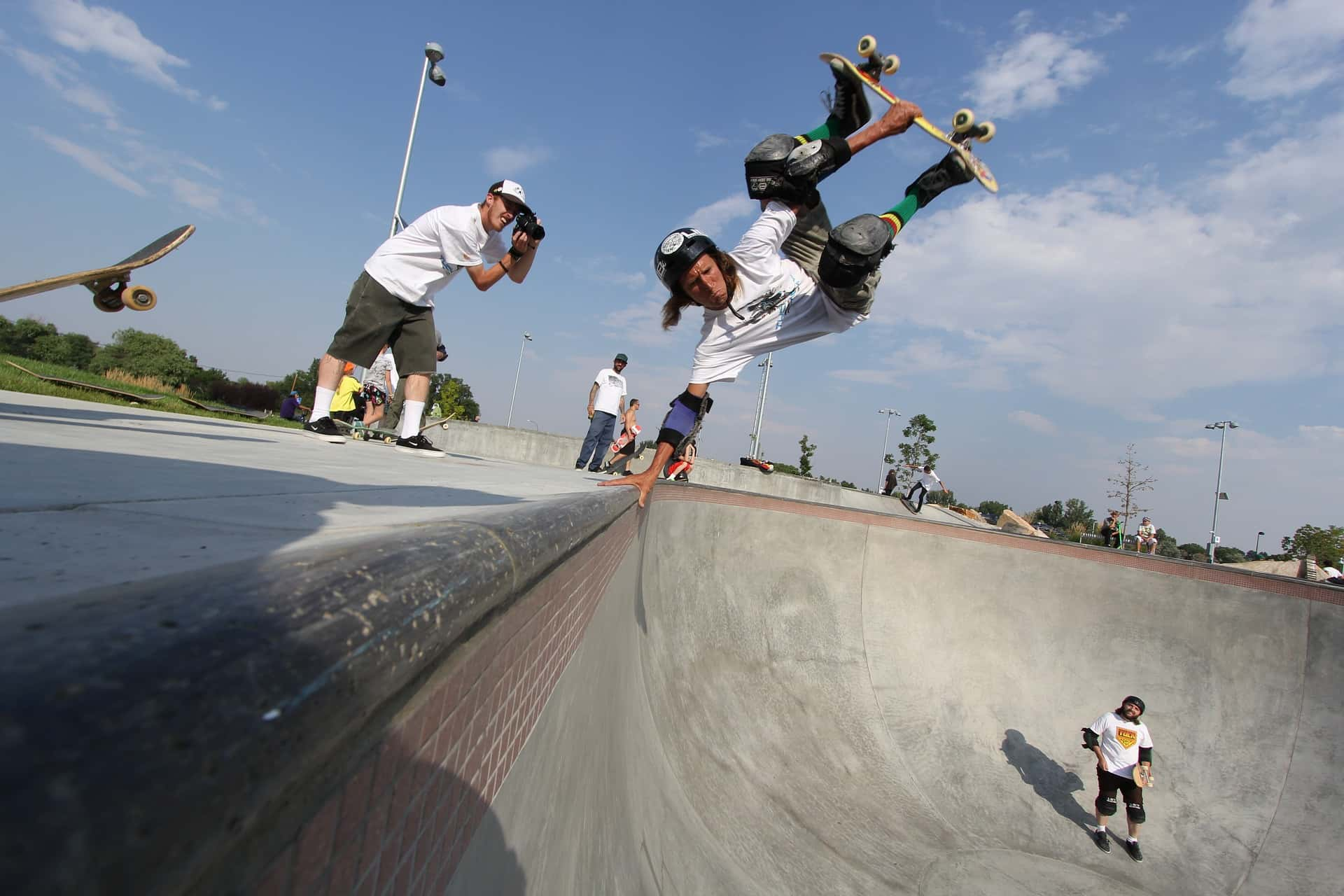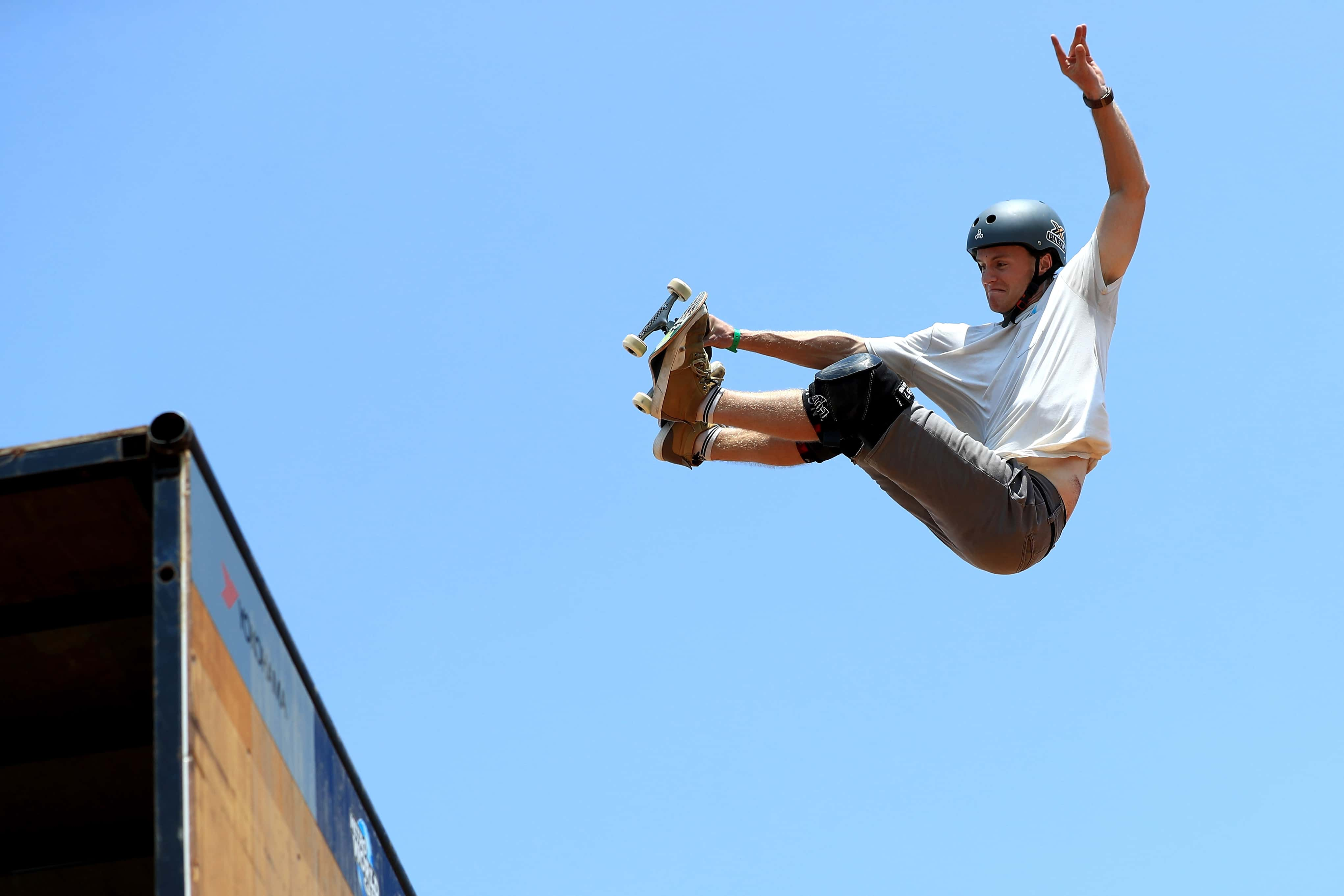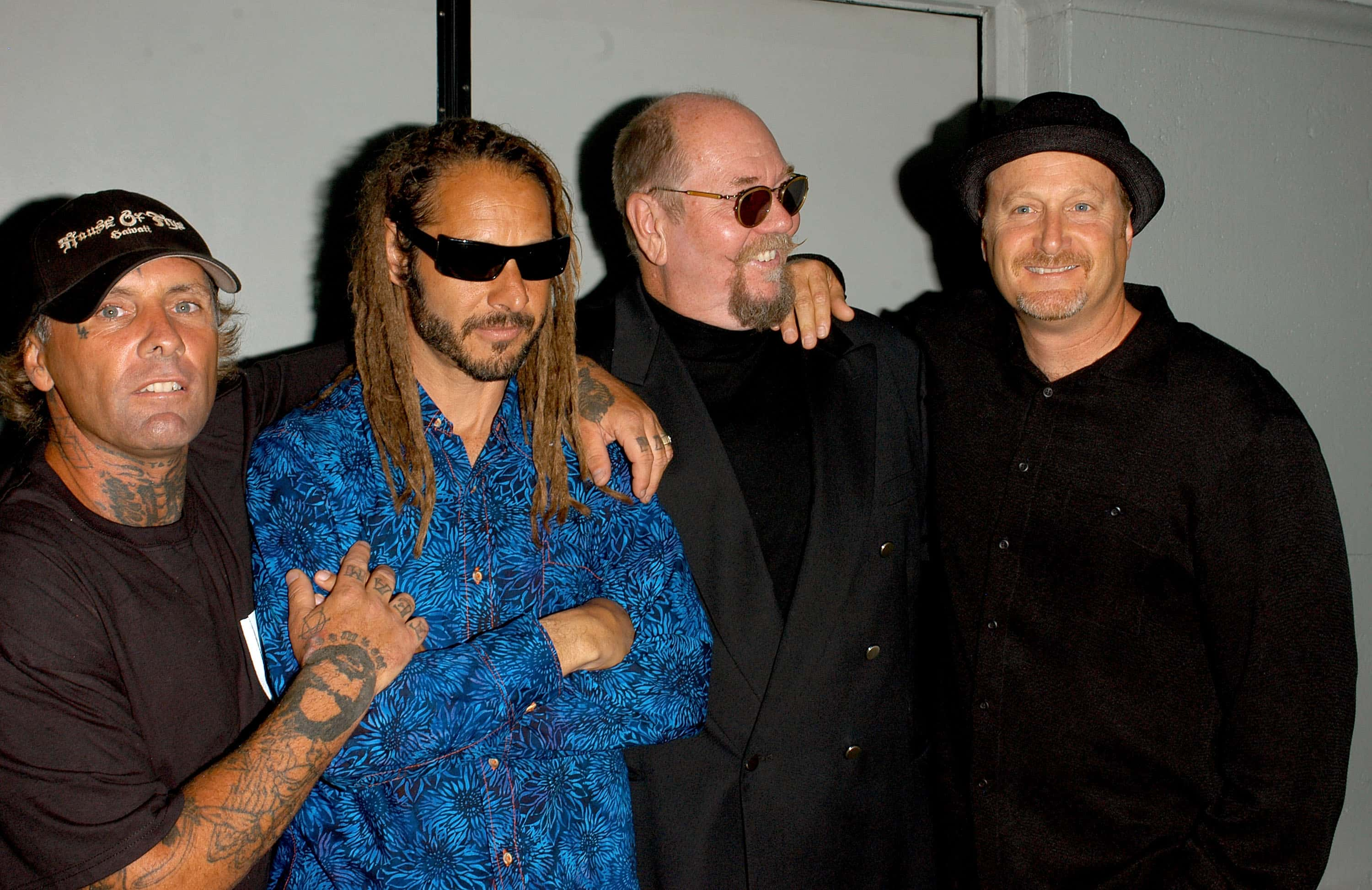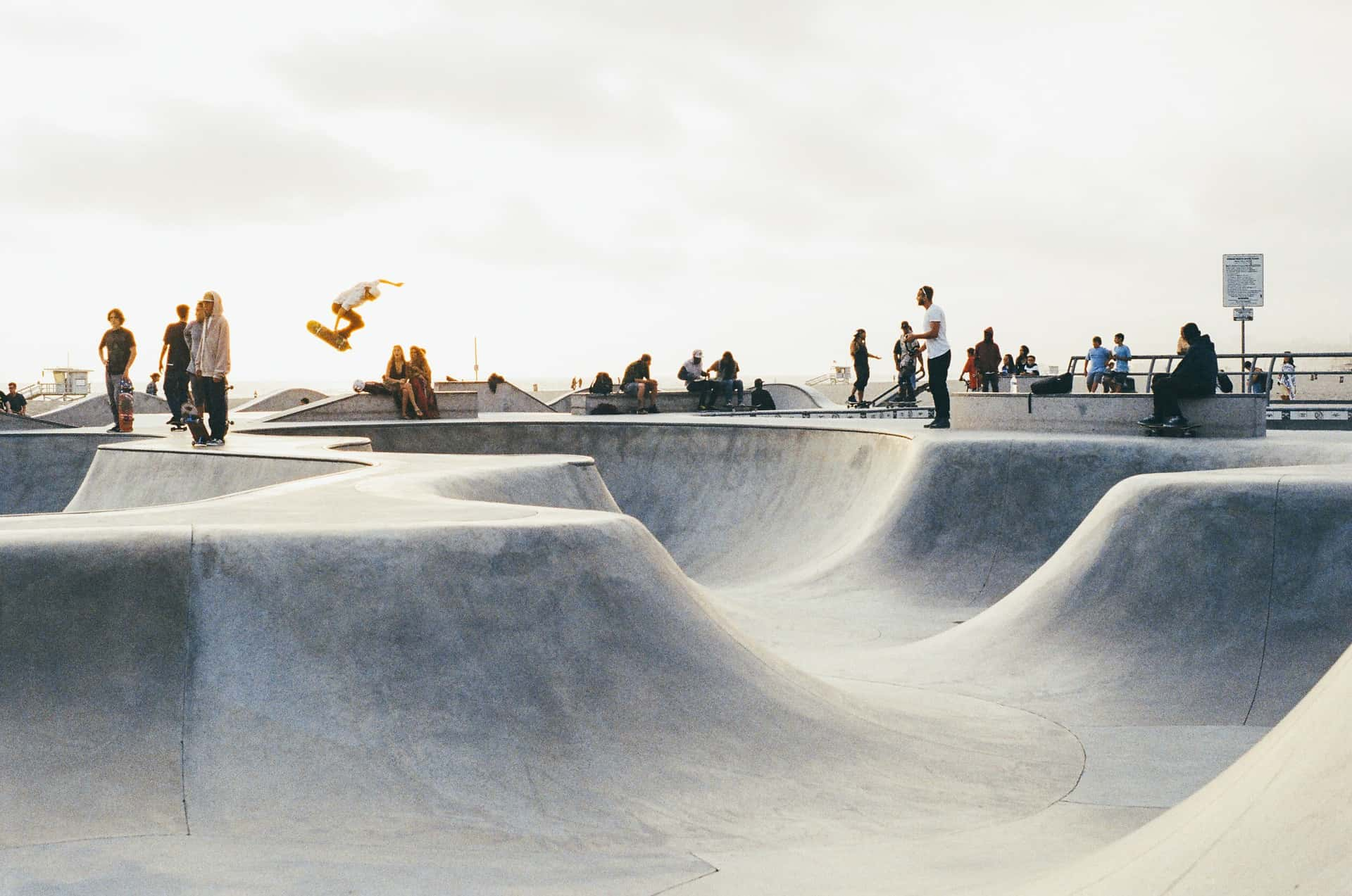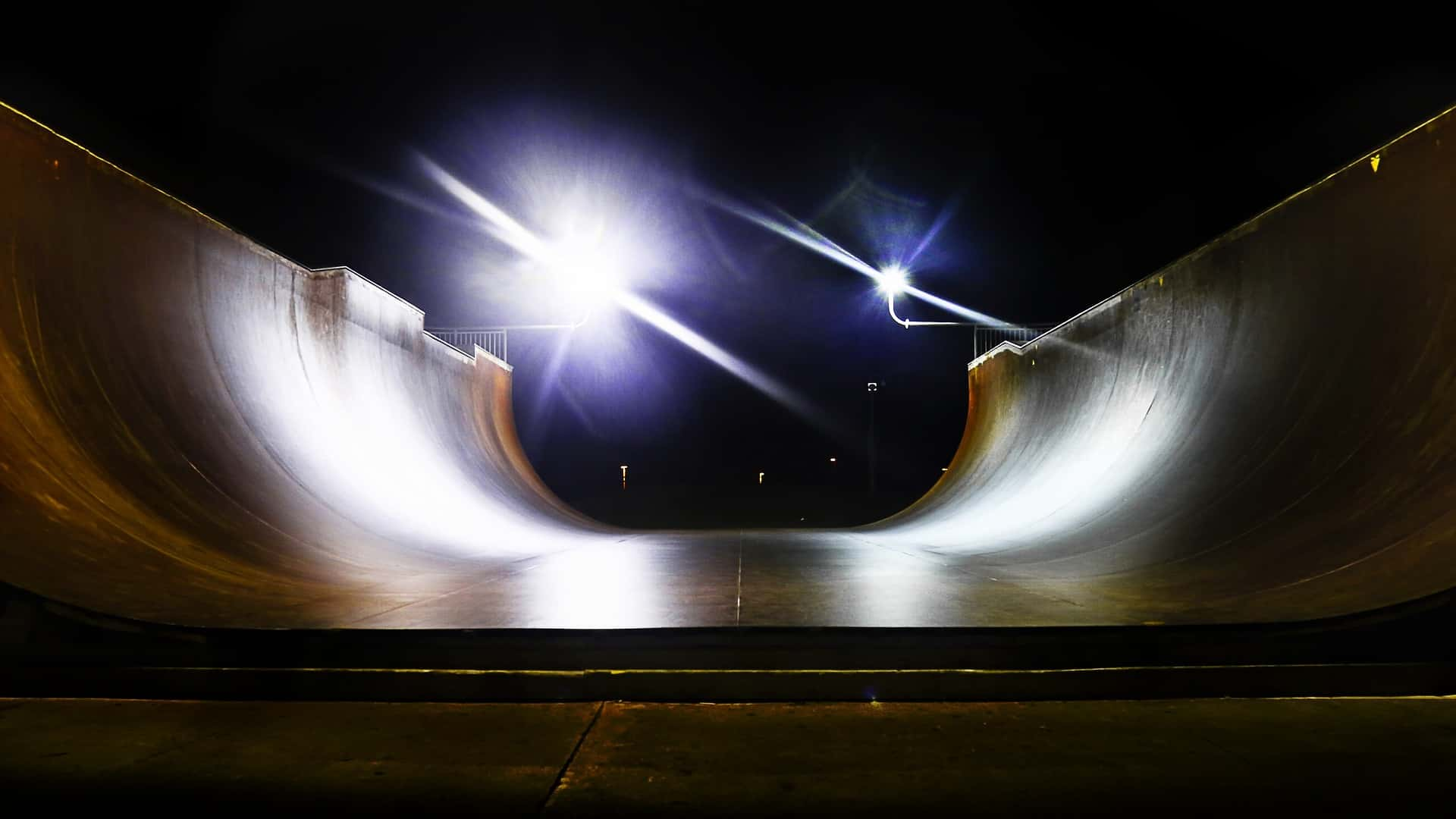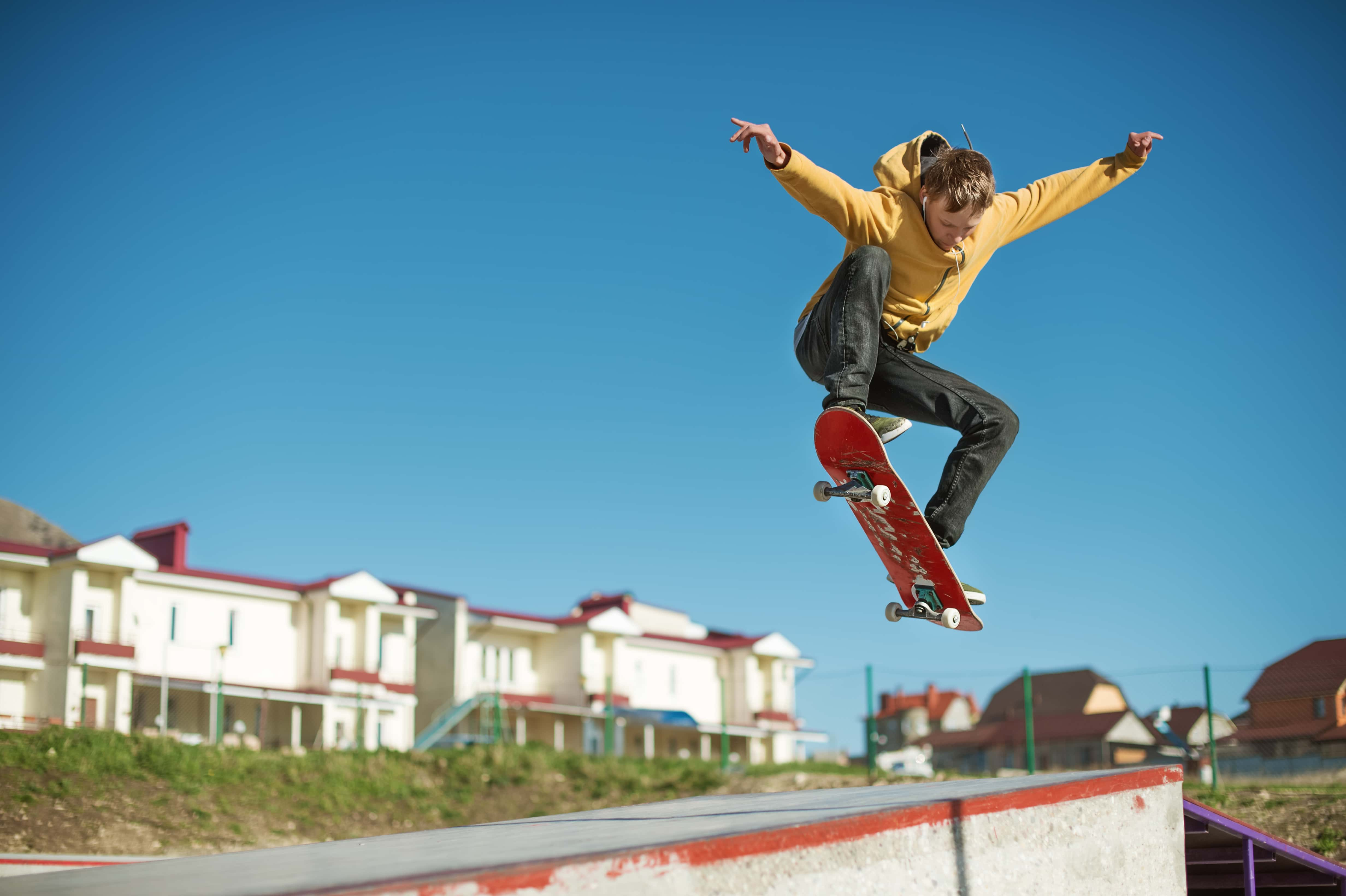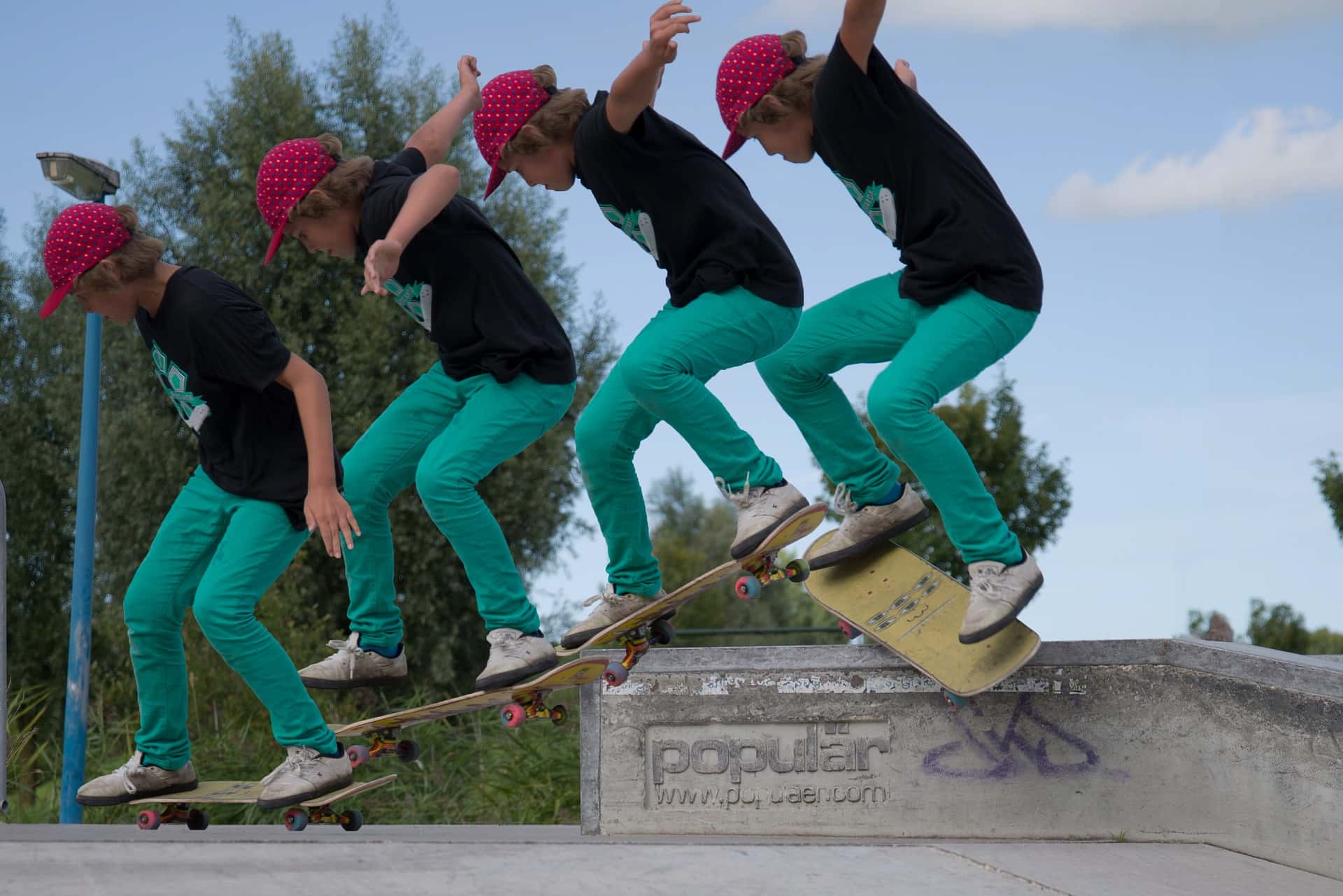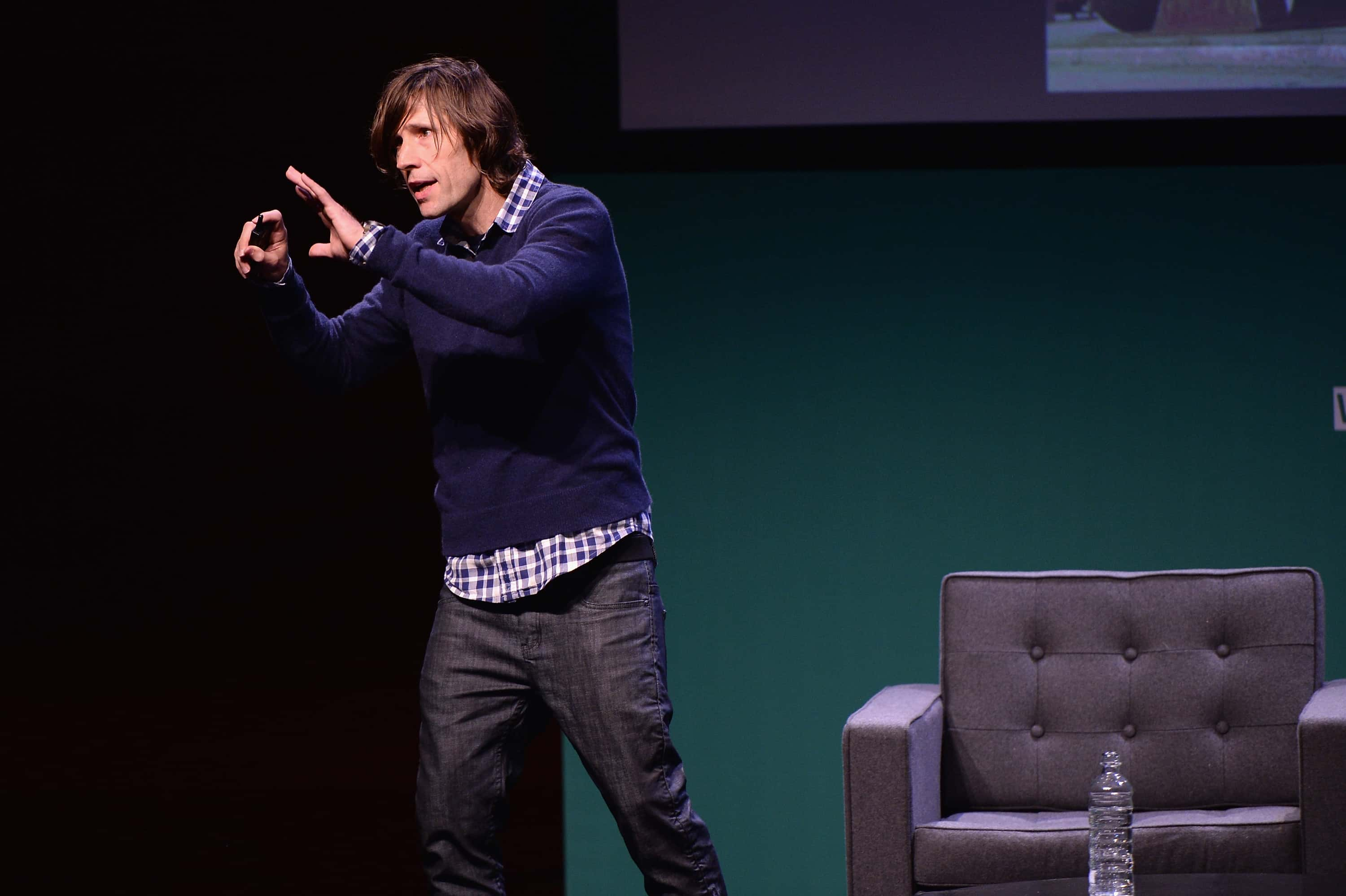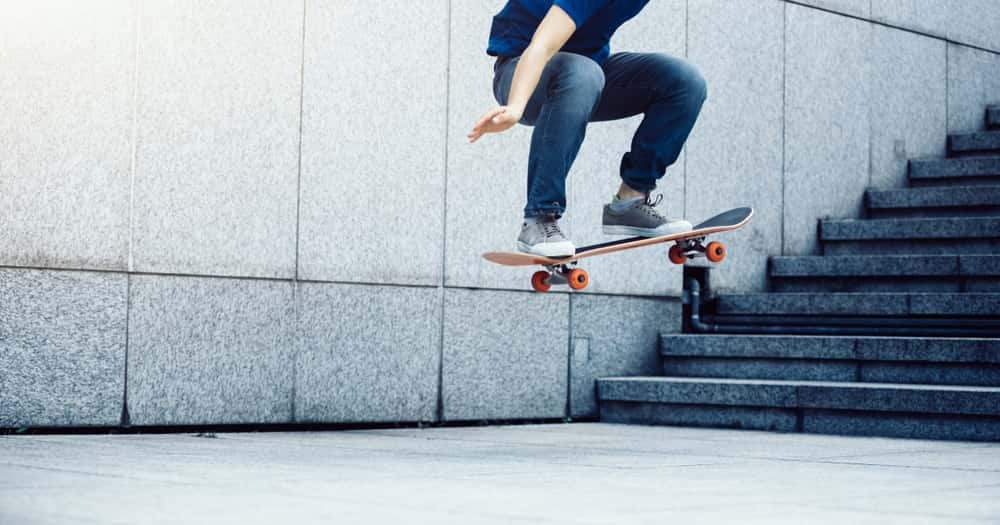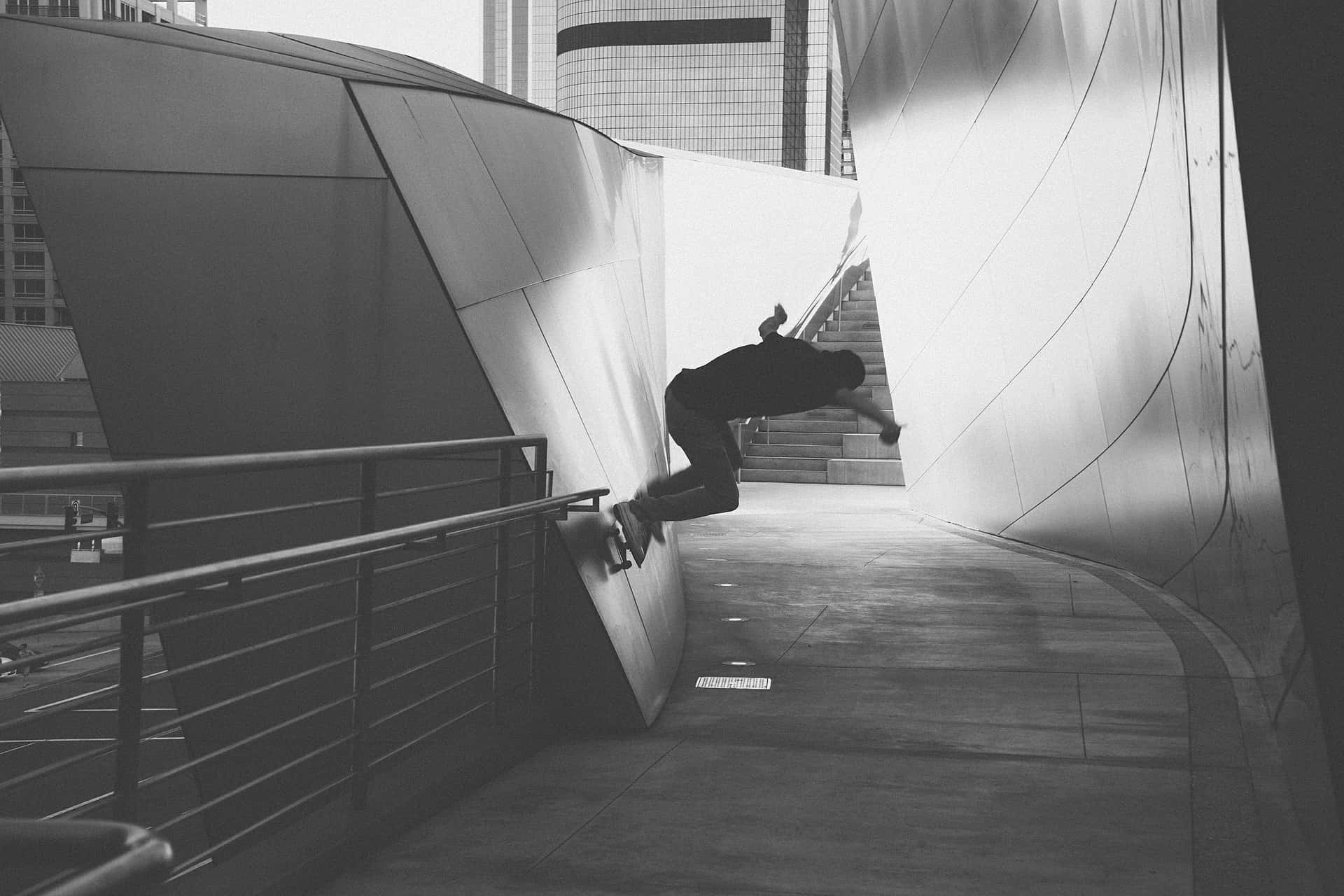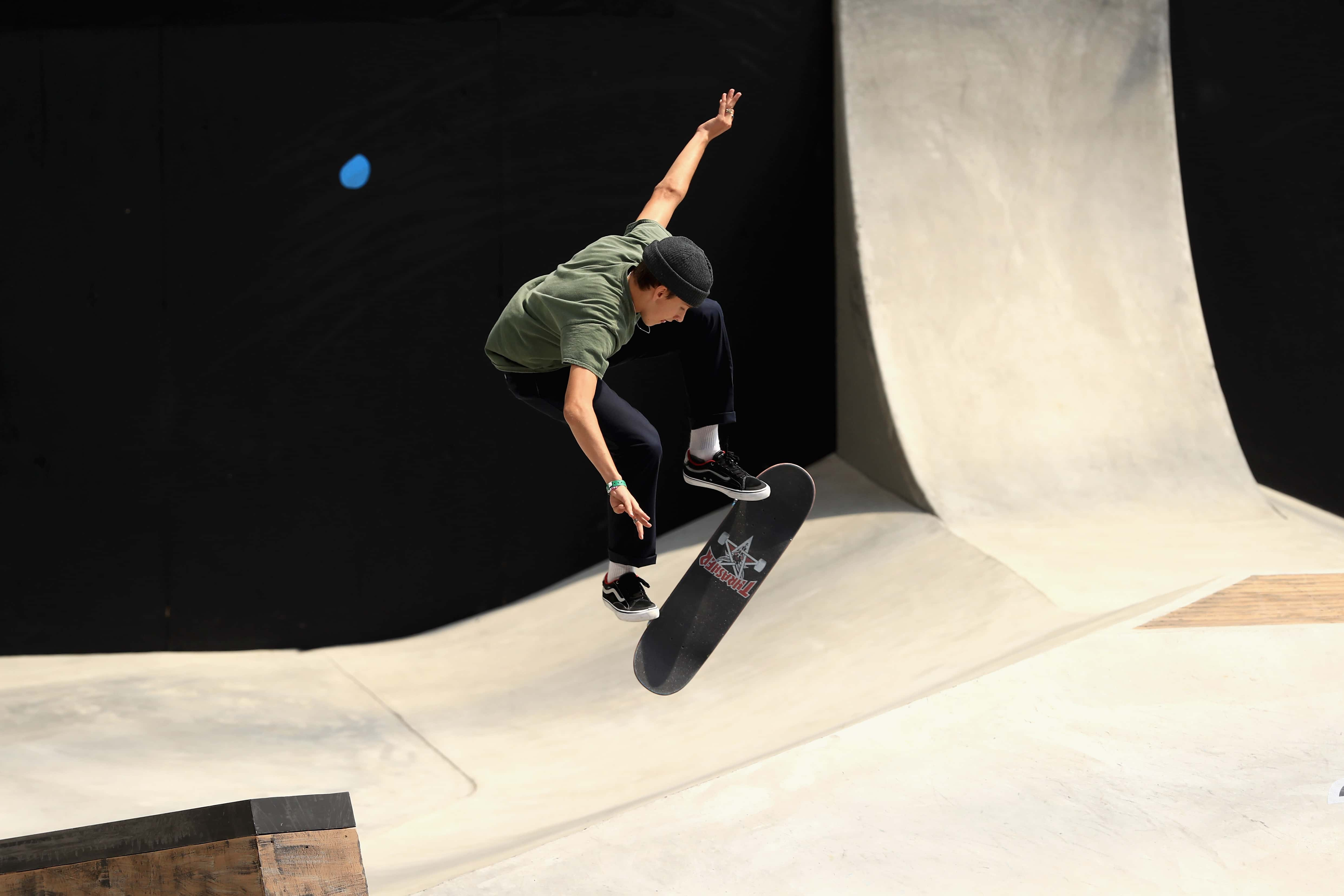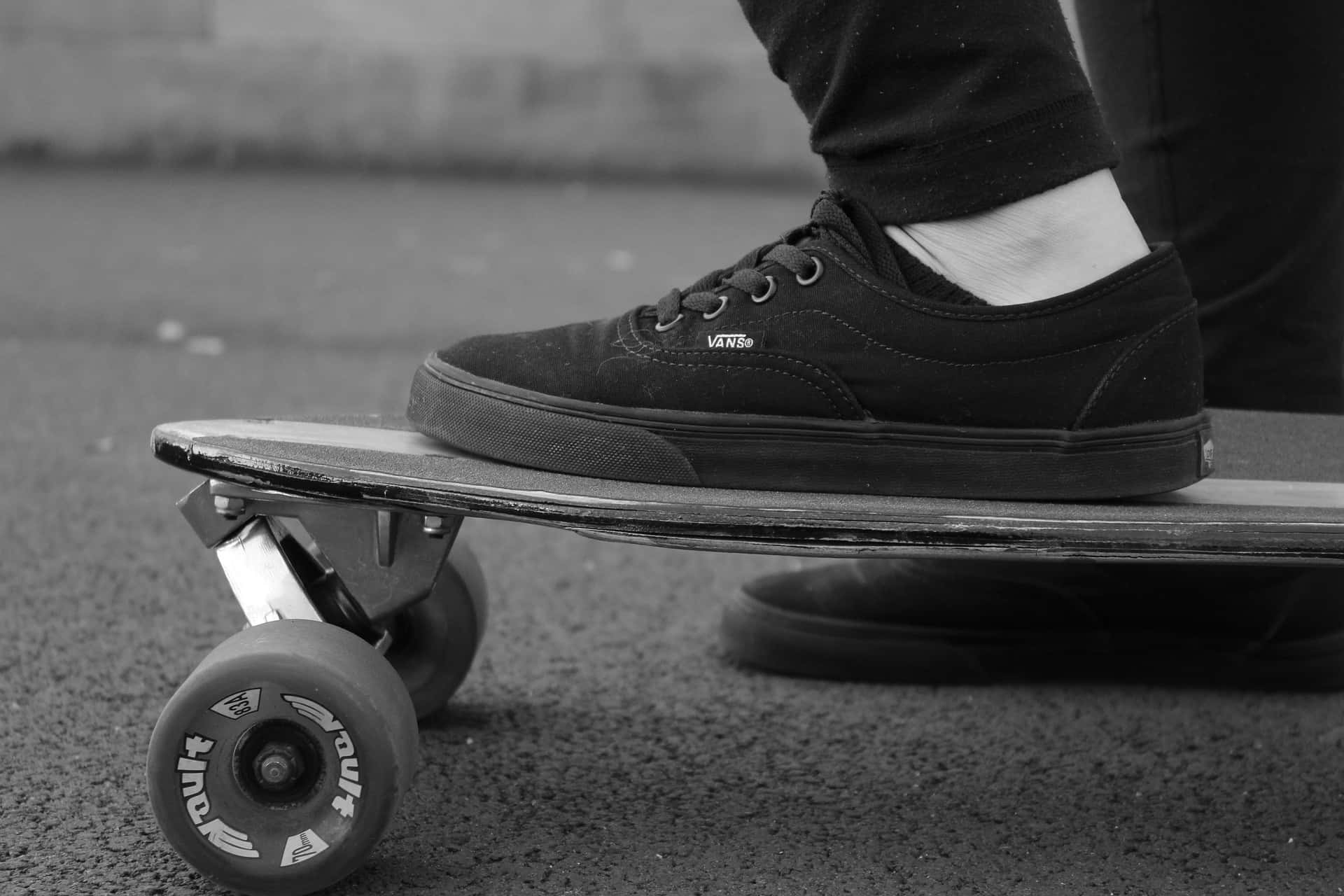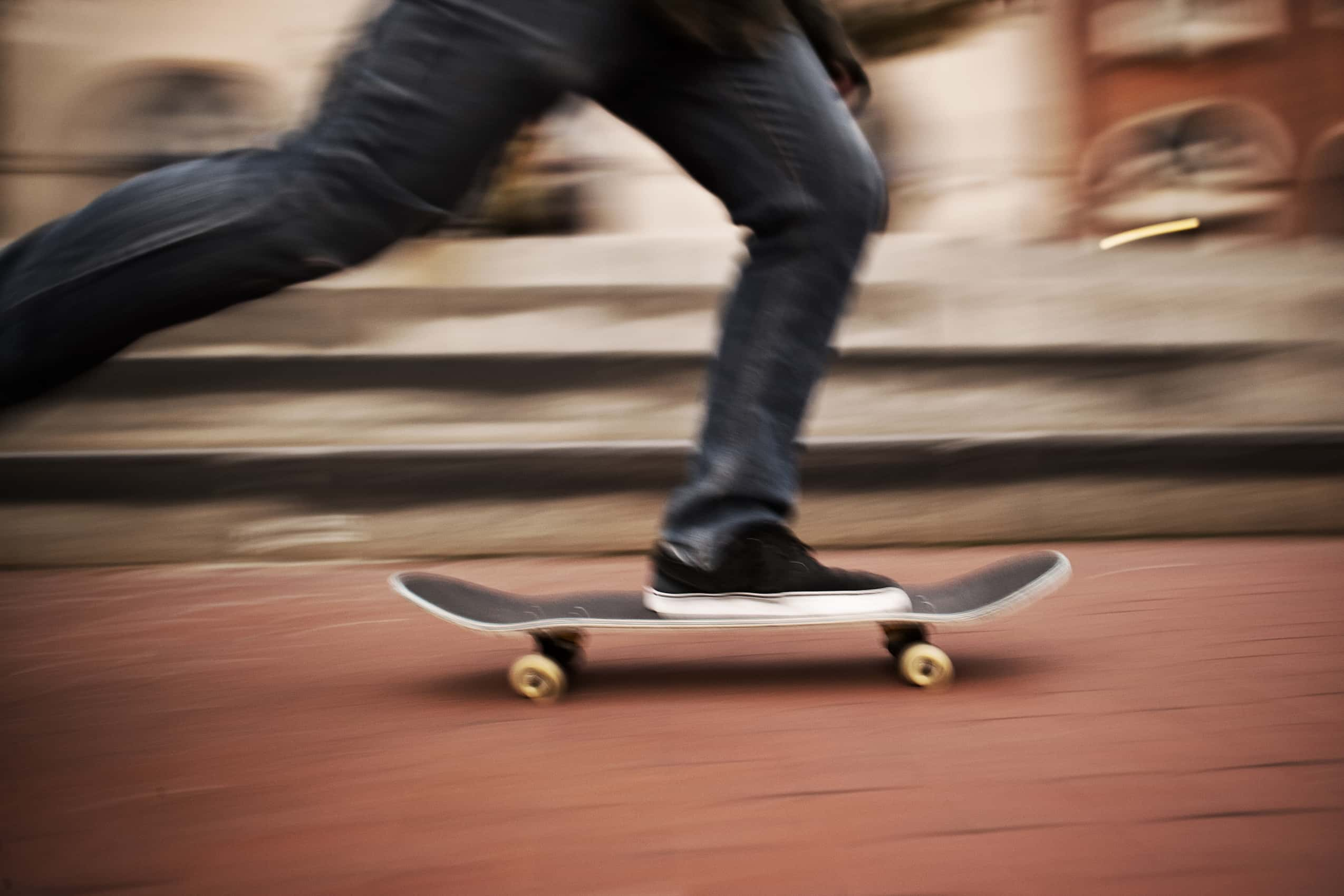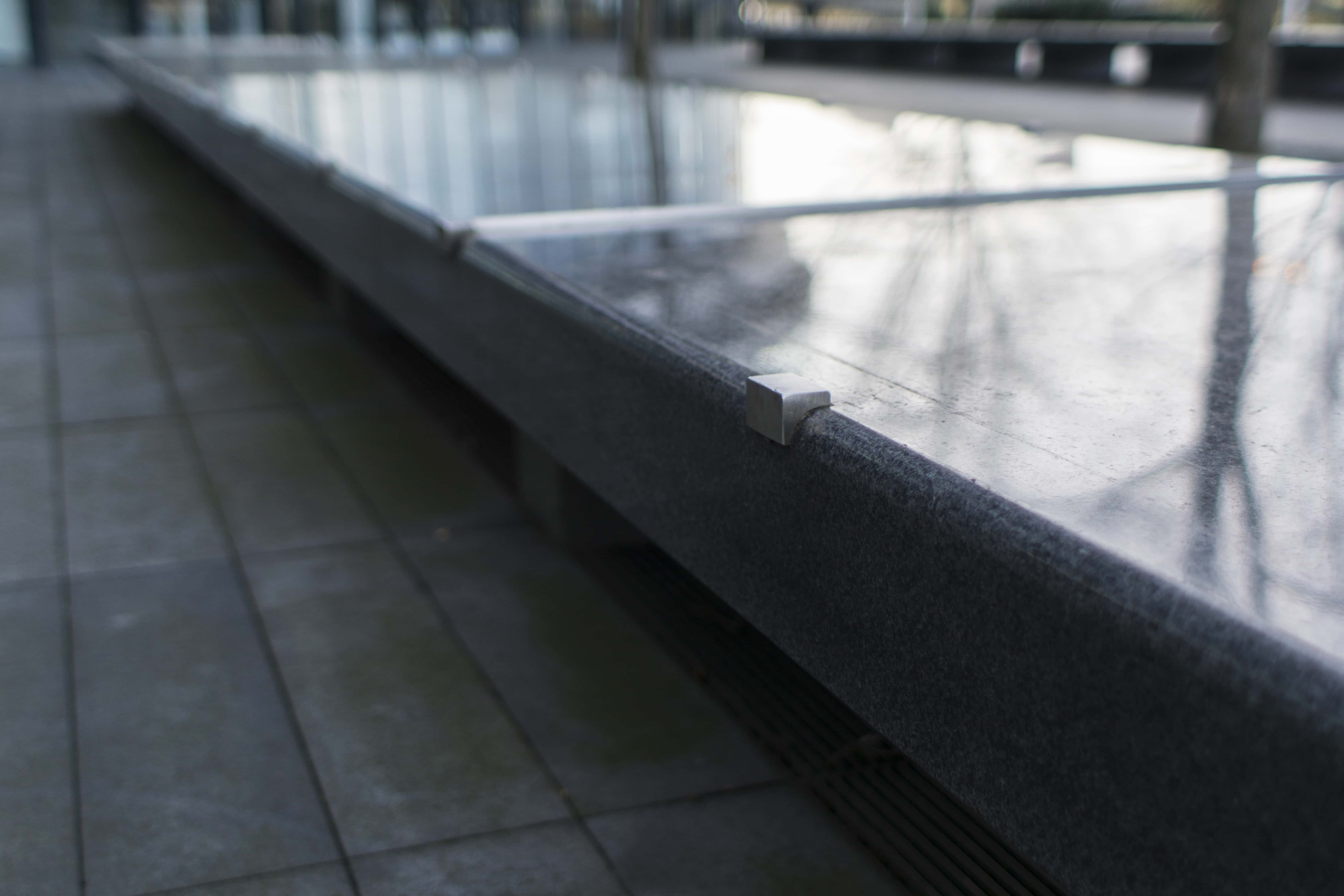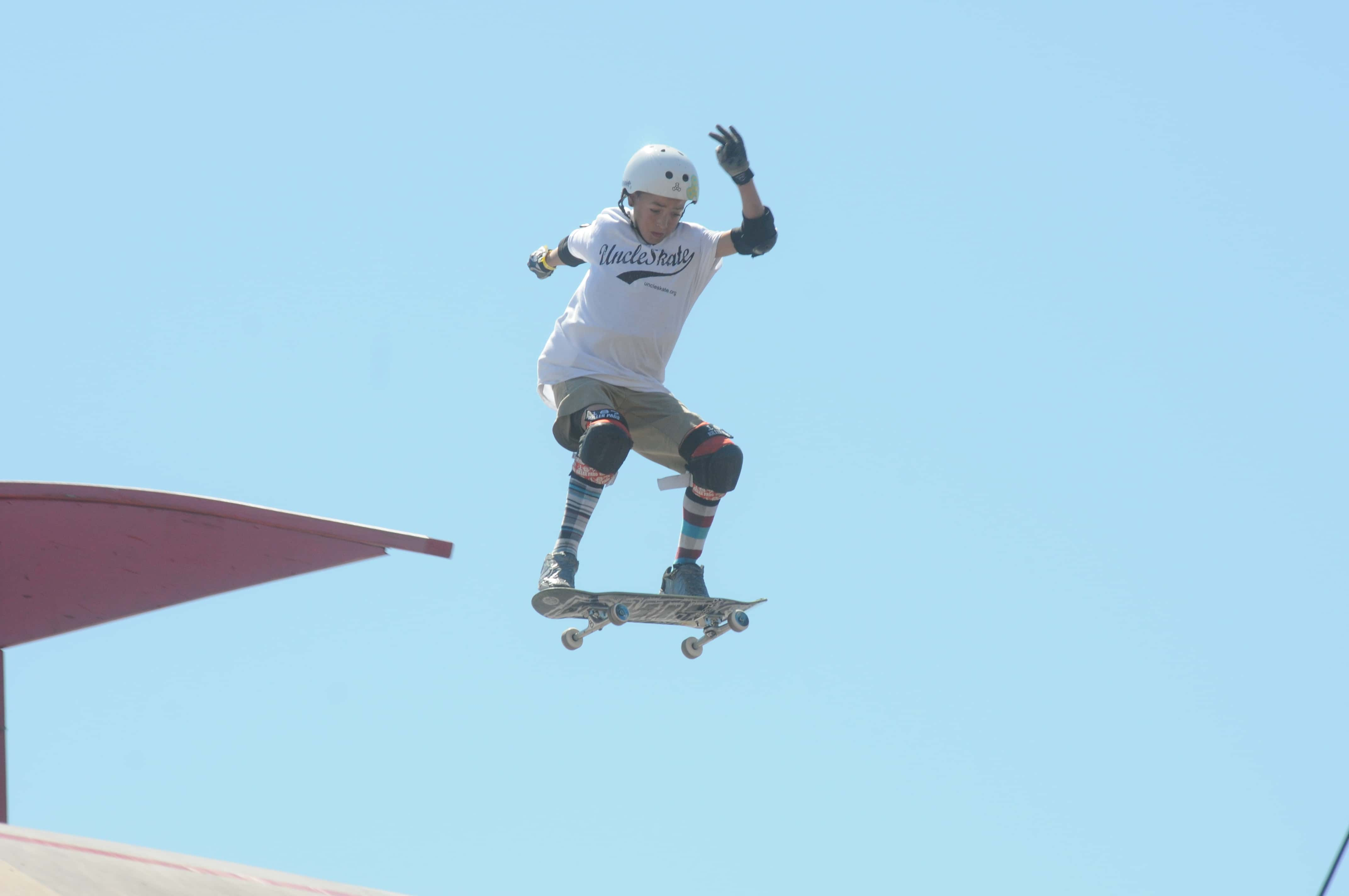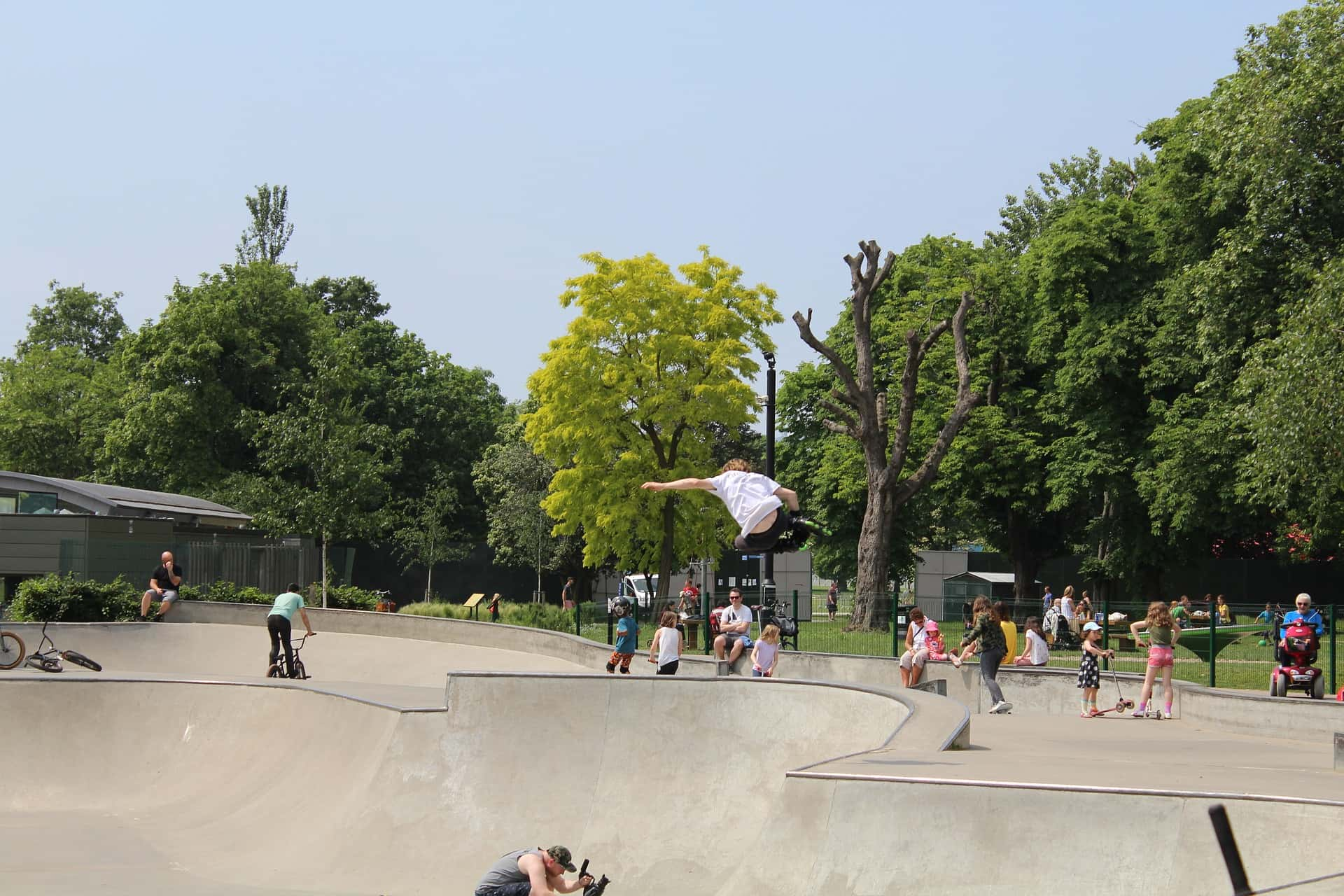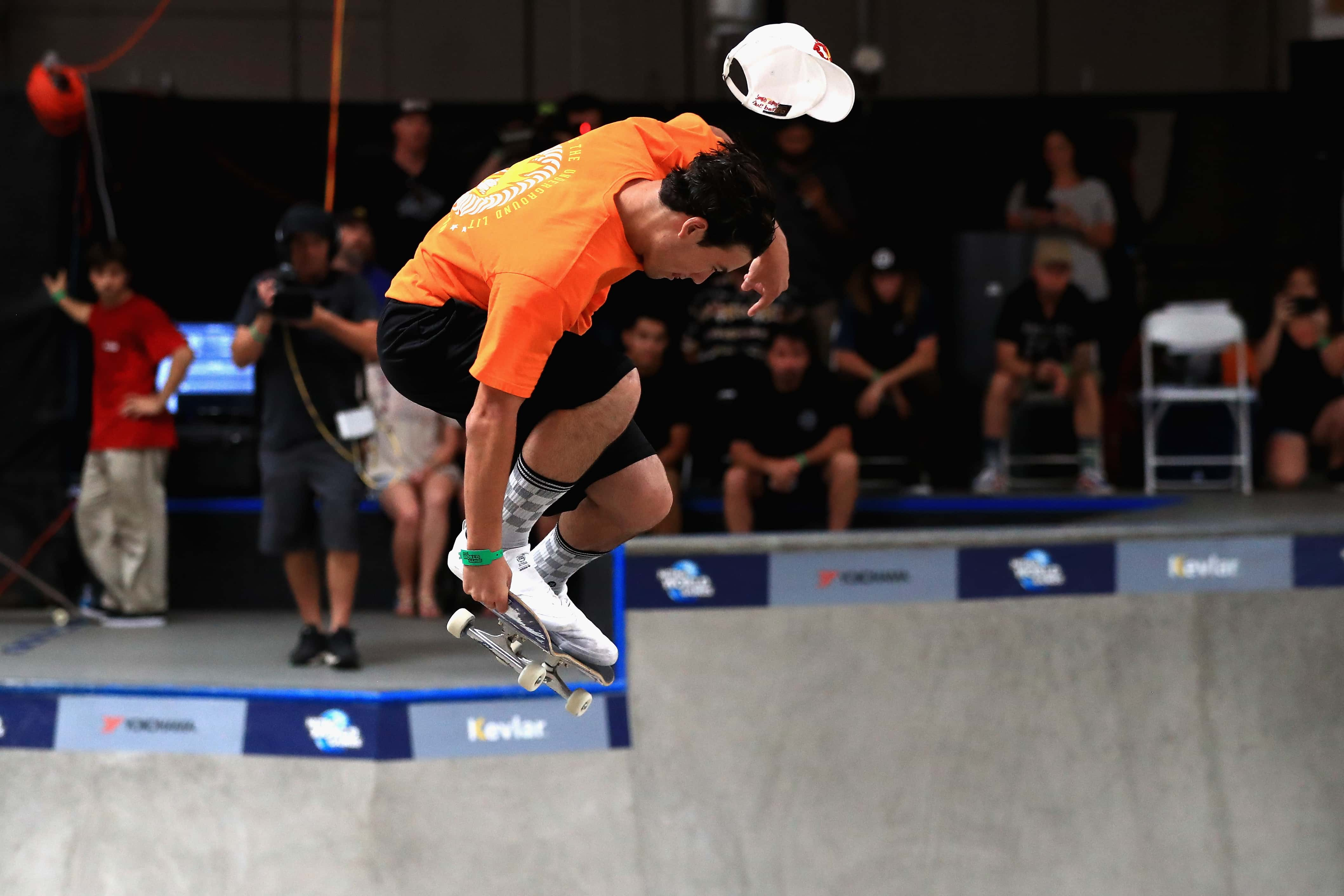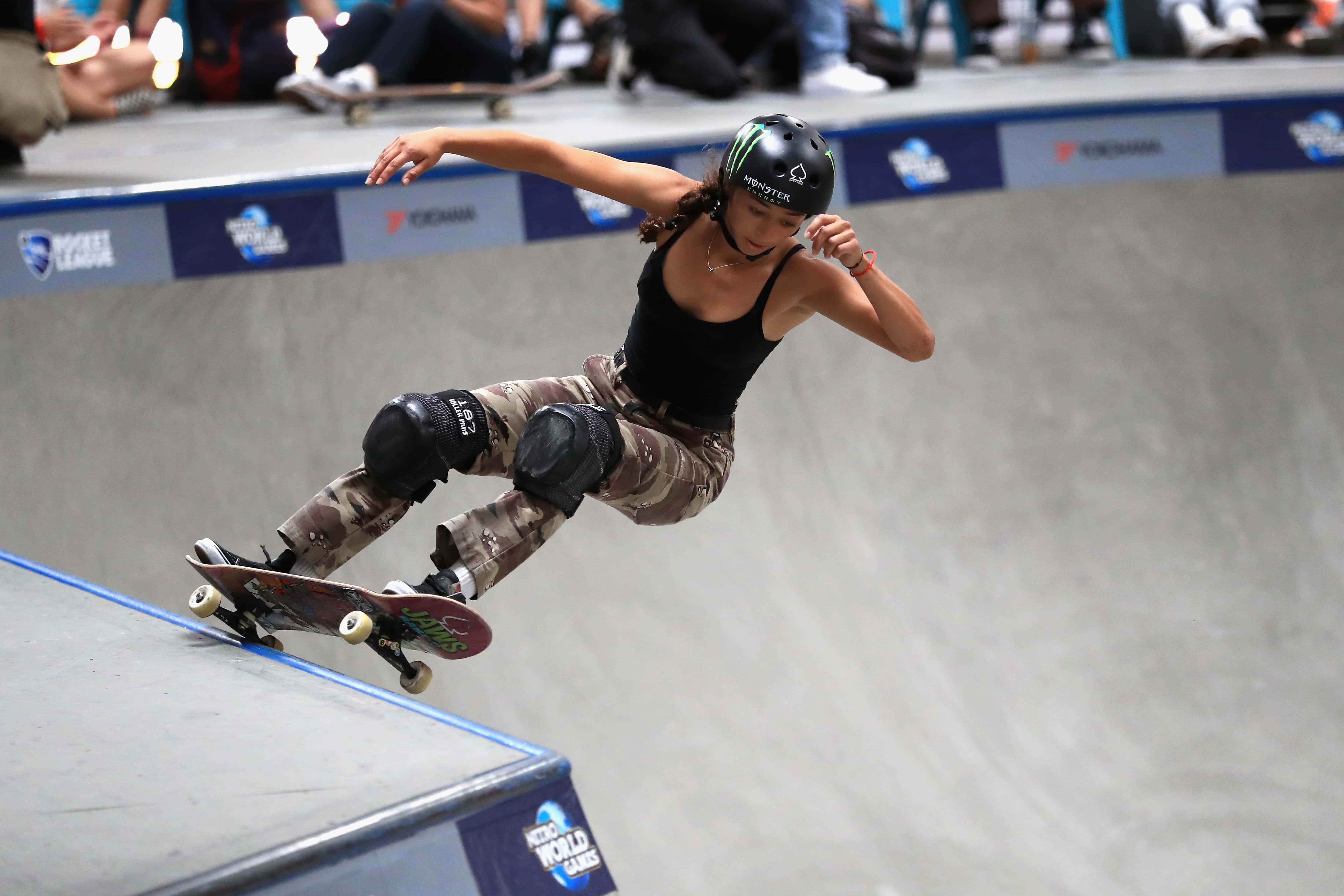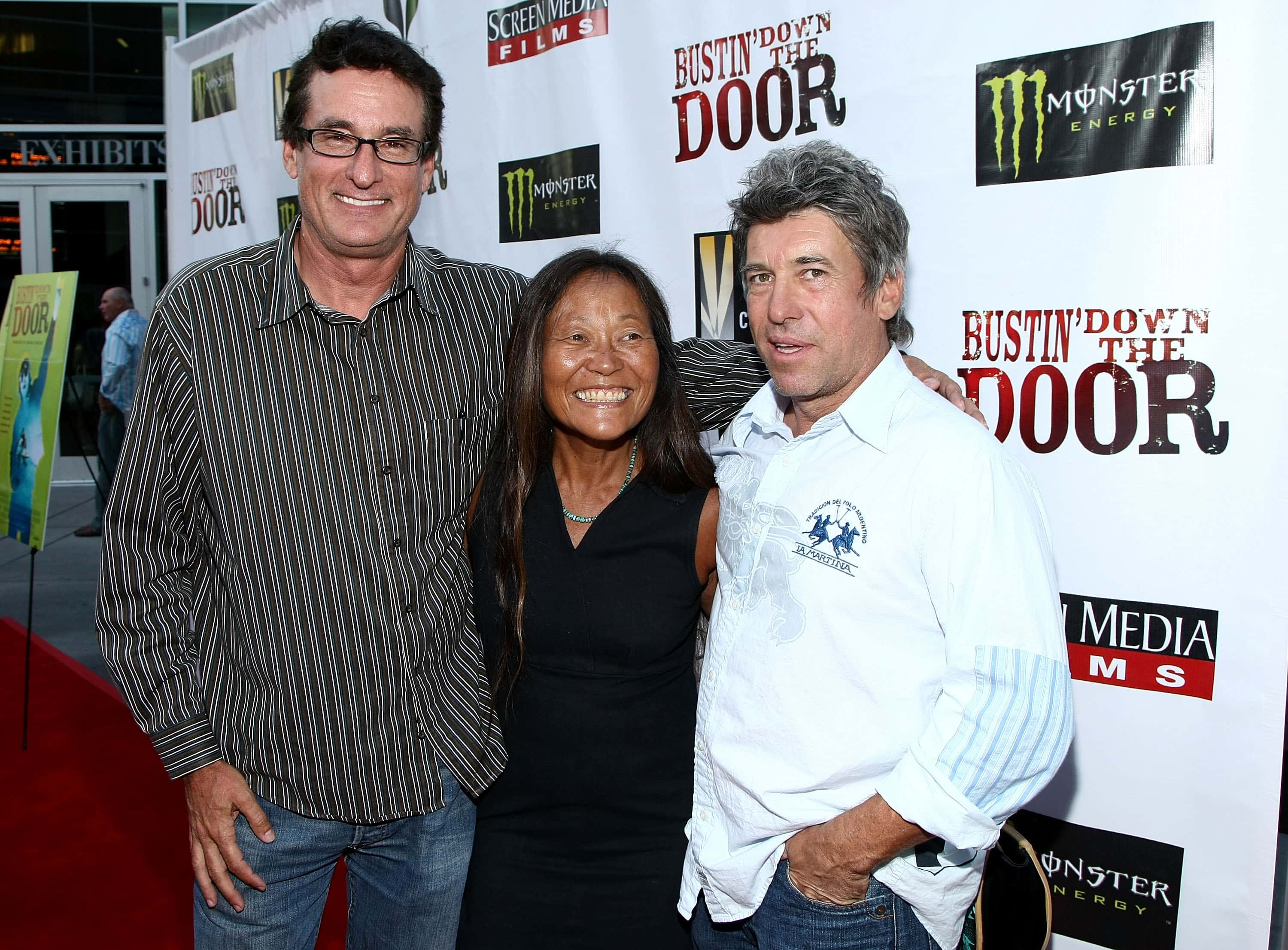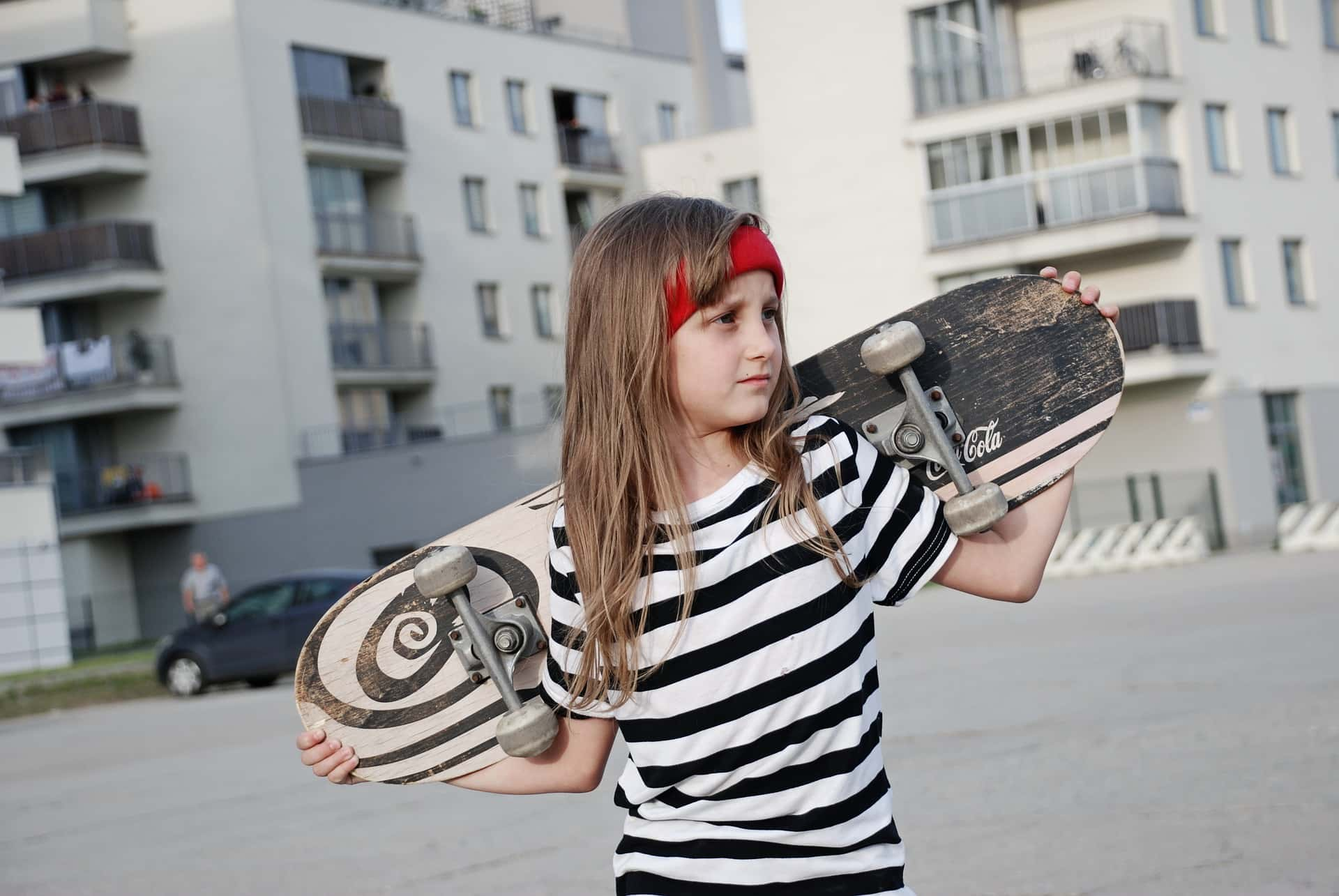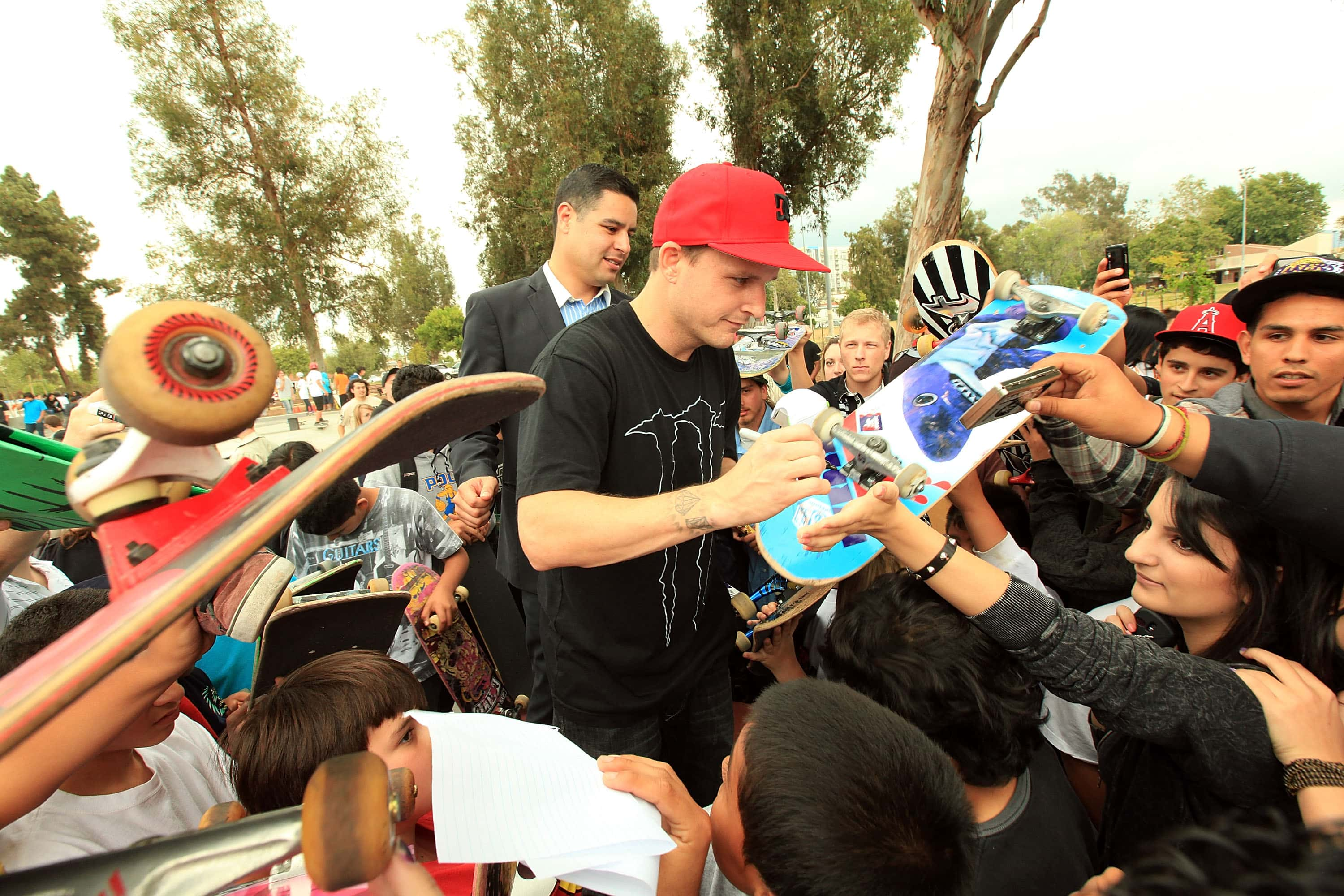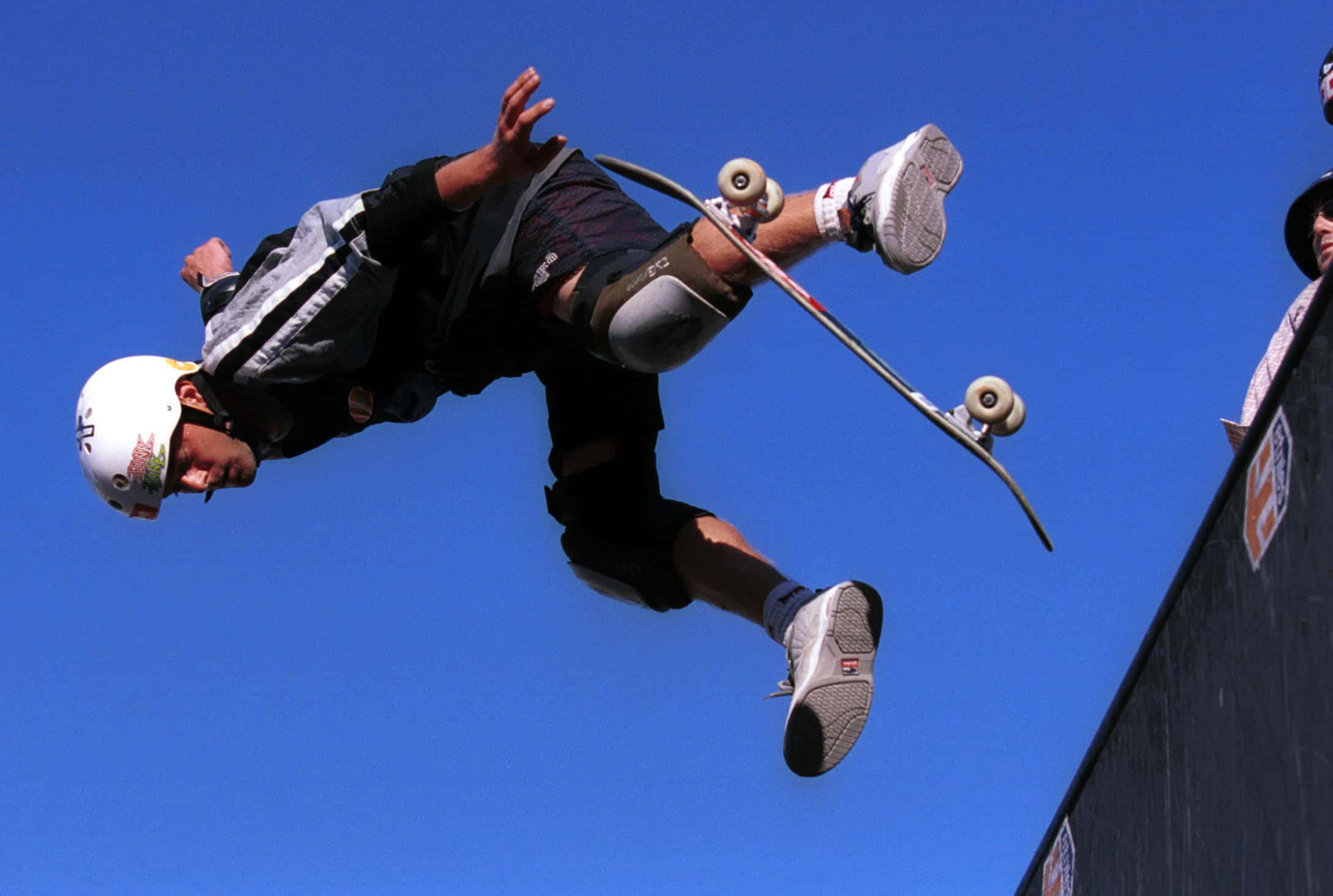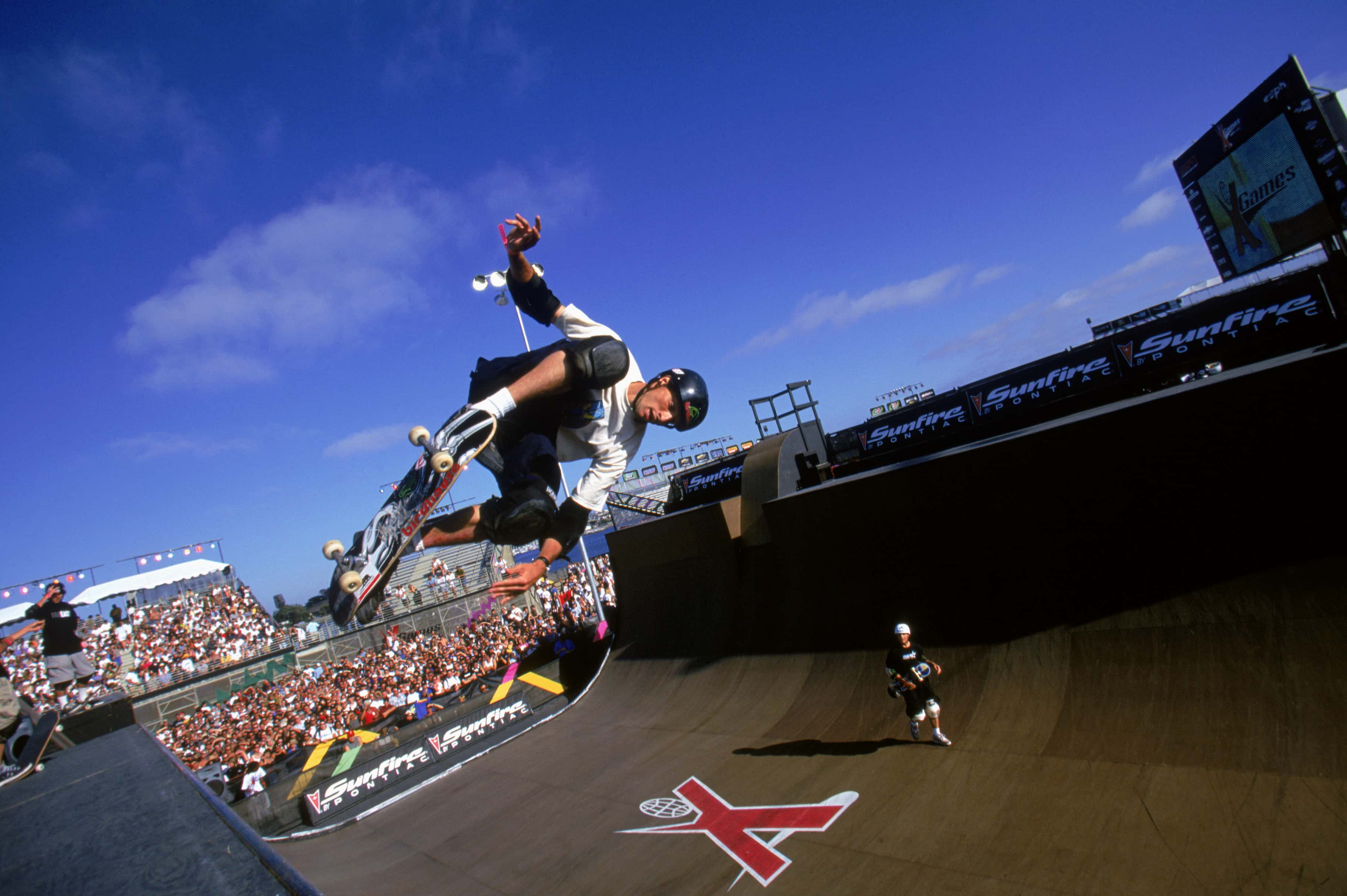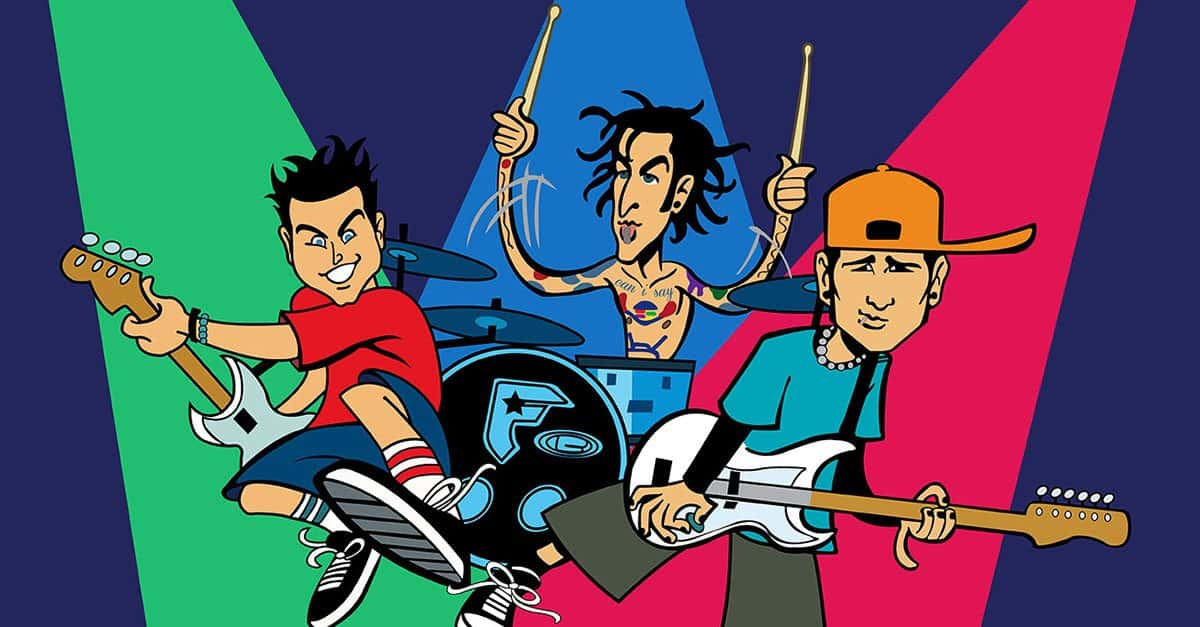45. Surf and skate!
In the beginning, skateboards were mostly used by children to ride down small hills but eventually made their way to surfers who wanted to practice their skills when the waves were too small. Surfers would often use skateboards to “sidewalk surf” and would ride around looking for embankments and hills that acted as stationary waves.
44. No shoes? No problem!
Due to its’ close link to surfing, many early skateboarders used to skate barefoot. One of the first methods to jump while riding a skateboard was called “Gorilla Grip” and involved wrapping one’s toes around the board and jumping. Ouch!
43. Anatomy of a skateboard
Skateboards are composed of several parts. The most obvious being the board, which is called a deck. In order to help to the rider stick to the board, griptape (a sandpaper-like material) is applied to the top of the deck. The next components are the trucks, which the rider uses to steer the board by leaning in the direction they want to travel. The trucks are mounted onto the board by a series of nuts and bolts called the hardware. Wheels are attached to the trucks and hold the bearings, which help to minimize friction and increase the speed of the rider. The higher the quality of bearings, the faster the rider goes!
42. Fidget Spinners
Fidget spinners are made with skateboard bearings!
41. The shape has undergone more changes than Trump’s Cabinet!
The first decks where literally planks of wood i.e. a piece of 2x4. However, overtime the deck was designed to appear much like a miniature surfboard with a front-end called the “nose” and a back-end called the “tail”. Overtime, the board began to have raised tails to allow the rider to more easily maneuver the board while riding. As skateboarding transitioned from pool-riding to street skating, the skateboard began to appear much more uniform with a raised tail and nose with a slightly-convex center that allowed the rider to perform a wide variety of tricks much more easily .
40. Polyura… what?
Almost certainly the most significant change to the skateboard was the introduction of polyurethane wheels. Before its introduction, skateboard wheels were often made of metal or clay. Polyurethane is a soft rubber-like plastic that provided the ideal traction for riding on pavement and allowed skaters to roll smoothly over cracks which allowed skaters to traverse new territories that were virtually impossible to ride before due to the limited range of the metal and clay wheels. With the introduction of polyurethane wheels came a massive surge of interest and the birth of street skateboarding.
39. How do you ride a skateboard?
There are two stances when riding a skateboard. Both depend on which foot is on the front and which is on the back of the board when moving forward. If your right foot is on the back of the board when moving forward, your stance is called “regular”. If your left foot is on the back of the board when moving forward, your stance is called “goofy”. Most people automatically feel more comfortable with one stance over the other and will usually choose the stance permanently.
38. So goofy!
The names for stances go back to the old surfing terms. No one is entirely sure of the origin of the term for goofy stance, however theories are that it came from the first animated film to depict surfing called “Hawaiian Holiday” featuring Mickey & Minnie Mouse, Pluto, Donald Duck, and you guessed it, Goofy who is shown riding right-foot forward.
37. Nollie? Fakie?
Both goofy and regular footed are considered “natural stances”. Interestingly, there are 3 other stances that are considered “unnatural stances”. These include Switch stance (where you ride in the exact opposite of your natural stance), Fakie stance (where you essentially ride backwards while moving forward), and Nollie stance (where your front foot is on the nose of the board and your back foot is in the middle). All three stances add to the incredible variety of technical tricks one may perform.
Fakie trick

Sign up to our newsletter.
History’s most fascinating stories and darkest secrets, delivered to your inbox daily. Making distraction rewarding since 2017.
36. Ambidextrous.
Most professional skateboarders are ambidextrous, or more specifically ambipedal. This is a result of skaters constantly pushing themselves to learn how to new perform tricks in every stance, both natural and unnatural.
35. Pools aren’t just for swimming!
During the early 1970’s a massive drought affected most of the southwestern United States, hitting Southern California especially hard. As a result, most homeowners drained their pools as a means to conserve precious water. Skateboarders soon learned that skating in the transition (the bowl-shaped part) of pools was similar to surfing large waves and better than any hill or embankment. This lead skateboarders on a search for bigger and better empty pools to practice “carving waves”. Modern skate parks are often designed to have sections that mimic the pools of yore where skateboarding was born.
34. Going airborne
As skaters increased their pool-riding skills, they would try to ride higher and higher up the pool’s transition, eventually reaching the tops of the pool ledges. Soon, skaters began to perform various maneuvers while carving around the pool’s transitions and on the pool’s ledges. It wasn’t long until skaters realized that they could actually leave the surface of the pool and return while still riding their boards in what they called “getting air”, soon becoming a goal for every skater.
33. The Dogtown and Z-Boys.
This article could not be completed without mentioning the Dogtown and Z-Boys! Early skateboarding focused more on style and performance than on pushing limits. However, after the invention of the polyurethane wheel all of that changed. A group of Southern California skaters known as the Dogtown and Z-Boys were the pioneers in pool skating. By forgoing style, they focused instead on extreme maneuvers. Before long, they soon became legendary in their abilities. The Z-Boys blew away all their competitors in every competition they entered. Soon, others began to mimic their styles and tricks and before anyone realized, the Dogtown and Z-Boys changed skateboarding forever.
Original Z-Boys
32. Birth of the skatepark.
As skateboarding became more and more popular, it became evident that skateboarders needed a place to ride and practice their skills, away from the public. The first parks designed specifically for skateboarding appeared in the early 1970’s and were largely made of cement and often featured various obstacles to ride around, such as empty pools, half pipes and massive full pipes .
31. The halfpipe
In the early 1970’s, skateboarders from California discovered massive emptied water pipes in Arizona that somewhat resembled pools. After skateboarding in them, they realized that they had found something special. Since it was literally half of a pipe, it became known as a halfpipe. Wanting to skate one closer to home, one skater by the name of Tom Stewart decided to make his own halfpipe out of wood in his front yard. It was instantly a hit amongst local skateboarders, and soon Stewart sold the plans to other people to build their own halfpipes. Now, it is virtually unheard of to find a skatepark without some type of halfpipe.
30. It all started with the “Ollie”
One day in 1978, while trying to perform a trick at local skatepark a young skater by the name Alan “Ollie” Gelfand, accidentally invented the most important trick in all of skateboarding; the Ollie. This trick is performed by slamming the back foot down while sliding the front foot upwards and simultaneously jumping, thereby leaving the ground with the board attached to the feet. This trick would go on to become the most important trick in skateboarding history as it became incorporated into nearly every other trick .
29. So what are skateboarding tricks anyways?
Skateboarding tricks are broken down into several categories. Many modern tricks are combinations of several trick categories . These include:
- Ollies- both the rider and board leave the ground in unison ex: Nollie
- Rotations- both rider and board rotate off the ground in unison ex: 180’s
- Flip tricks- board flips over in a complete rotation off the ground ex: Kickflips
- Spin tricks- board spins off the ground in semi and complete rotations without the rider ex: Shuv-its
- Grinds- one or both trucks literally grind on a surface ex: 50-50
- Slides- any part of the board slides across a surface ex: Boardslide
- Grabs- rider grabs the board while leaving the ground ex: Melon grab
- Stalls and Lip tricks- rider literally stalls the board the edge of a surface while often performing a maneuver to disembark the edge ex: Rock-n-roll
- Manuals- rider balances board on two wheels while riding forward or backwards ex: Nose-manual.
28. Rodney Mullen
Rodney Mullen is a living legend! As a young flatland skateboarder from Florida, he invented nearly every flip and spin trick in the skateboarding catalogue. Rodney was the first person to perform an Ollie flatland, which he soon used as the method to flip and spin the board while airborne.
27. The most stairs ever ollied!
The record for the most stairs ever ollied goes to American professional skateboarder Aaron “Jaws” Homoki at 25 stairs! To put that into perspective, that is a height over 14.5 feet and over 23 feet long… yeah, that’s a lot !
26. Types of skateboarding
Skateboarding can be categorized into several groups. For the sake of simplicity, we’ll focus on the 4 most prominent ones. The first category is simply just riding around. Remember those frat boys riding to class back in college? The second category is flatland skateboarding, where the skater focuses on highly technical tricks while either remaining relatively stationary or while moving in small circles on flatground. The third category is street skating where skaters perform tricks on various obstacles ranging from stairs and gaps, to handrails and ledges. The fourth category is vert/ramp skating where the skater performs technical tricks on ramps, vertical halfpipes and pools. Many skaters enjoy all categories but usually prefer one over the others . Skateparks often offer great combinations of the 4 categories.
25. Longest ollie in the world
The world record for the longest unassisted flatground ollie goes to professional skateboarder Jordan Hoffart at 16 feet, 6 inches. That is longer than the average adult Green Anaconda!
24. The longest handrail grind.
At 62.17 meters (nearly 204 feet), Jagger Eaton holds the world record for the longest handrail grind. That is over ⅔ of a football field!
23. Sport or not a sport? That is the question!
Although many people consider skateboarding to be a sport, both skaters and non-skaters alike disagree. Some argue that in order for skateboarding to be considered a sport, there must be goals and rules to govern it. Others argue that competitions prove that skateboarding is a sport as there are rules and goals. Most compromise by calling it an action sport.
22. Vans were not the first skateboarding shoe.
Despite what many believe, Vans did not make the first skateboarding shoe. In 1965, the Randolph Rubber Company invented the first skateboarding shoe called the “Randy 720”, which looked very similar to Keds but with thicker rubber outsoles. However the company didn’t last long, and soon went out of business. In 1966 one of its employees, Paul Van Doren along with his brother Jim, started their own shoe company dedicated strictly to skateboarding. They named the company Vans, and the rest was history.
21. The fastest speed on a skateboard.
In May 2016, Canadian Erik Lundberg set the world record for the fastest speed ever recorded on a skateboard at 89.41 miles per hour. For perspective, he was traveling almost 15 mph over the speed limit of most freeways in the US.
20. Skate stoppers
Due to the inherent yet inadvertent damage skateboarding causes to public and private property, many companies have trademarked devices called “skateboarding deterrents” that prevent skaters from grinding and sliding on ledges and rails. Many of which are hidden in plain sight, often appearing as decorations and ornaments.
19. The Mega Ramp
The Mega Ramp is literally that. It is a massive ramp used by skateboarders to launch incredible distances and attain nearly impossible heights. The ramp is composed of a nearly 200ft tall roll in ramp that is used to launch over a 50-70ft gap. In 2005, professional skateboarder Danny Way used a Mega Ramp to launch over the Great wall of China!
18. Born to fly!
Danny Way, an American professional skateboarder, holds two world records for both the highest air on a skateboard at 25.49 feet and the longest gap cleared on a skateboard at 79 feet. Both of which were attained using the Mega Ramp.
17. Around the world
Today you can find skateboarders and skate parks in nearly every country and on nearly every continent around the world. Accept Antarctica because, obviously.
16. Multibillion dollar industry
It’s estimated that skateboarding comprises an over $5 billion a year industry. That’s a lot of moolah!
15. Love skateboarding in California? So do magazines!
It’s no secret that skateboarding has deep ties to Californian culture. But did you know that almost every skateboarding magazine is based out of the state? These include Thrasher Magazine, Transworld Skateboarding, Big Brother Skateboard Magazine, The Skateboard Mag, and Skateboarder.
14. So many options!
There are over 3,100 skate parks in the US with nearly 500 in California alone. Most of which are located in Southern California . Anyone up for a road trip to SoCal?
13. No pain, no gain!
If you’ve ever ridden a skateboard, you know first hand how much it hurts to fall. In fact, falling is just as much a part of skateboarding as performing tricks. Unfortunately, this has its consequences. Every year over 65,000 people end up in the emergency room due to skateboarding related injuries in the US alone . That’s about 176 people a day! Be careful out there!
12. Competitions
The earliest skateboarding competitions were largely based around freestyle riding and slalom courses where riders would skateboard on downhill course while zigzagging through cones and around various obstacles. As new tricks were invented and the limits pushed, skateboarding competitions began to take on a whole new form. Competitions started to include ramps, rails, stairs and gaps. In modern times, skaters can win tens of thousands of dollars in one competition. Yes, you read that correctly, TENS of thousands of dollars!
11. From rags to riches.
In the early days, skateboarding was just a hobby where people could occasionally win small prizes and a little money from competitions. Today, many professional skaters enjoy stable and significant incomes. In fact, some skateboarders have become millionaires via salaries, competition prize money, and product endorsements . Time to go dust off that old board in the garage!
10. The ugly truth.
Much like many other professional athletes, female skateboarders are often underrepresented and significantly underpaid compared to their male counterparts. In fact, many professional female skaters have to work day jobs to support their professional skateboarding careers.
9. It’s a man’s world. Not!
Some of the first professional skateboarders were women. These include Patti McGhee, Peggy Oki (an original Dogtown Z-Boy), Carabeth Burnside and Elissa Steamer. Recently, there has been a surge in the inclusion of women’s categories at large skateboarding competitions as well as an increase in the number of female professional skaters worldwide. There are also now all-girl skate teams such as Meow Skateboards !
Peggy Oki
8. So, how do you become a professional skater?
Sorry kids, there is no one way to become a pro skater. Obviously you need to be crazy skilled and not be afraid of getting hurt, but there is a general pattern that most pro’s take to become professional skateboarders. The first and most important is to love what you do. The second is to make small goals and to constantly push yourself. The third is to record small video parts of your best tricks and send it to local skate shops where they may offer a sponsorship consisting of discounted parts and the occasional free deck. After that, many skaters will continue to hone their skills and eventually be offered “flow” from a professional skateboarding company (flow means that the skater receives free products as an incentive to develop their skills and to unofficially represent the company). Eventually, many skaters that have significantly improved their skills are offered an “amateur” status on a professional team where they receive free product and officially represent the team but are often unpaid. If the skater continues to improve their skill, they may be offered the professional status where they receive ample free product, officially represent the team and are paid salaries. So now you know!
7. Skateboards, a weapon of war?
During the early 1990’s, the U.S. military briefly tested using skateboards as a means to maneuver inside of buildings and urban settings in a program called “Urban Warrior ‘99”. I wonder if boards were camouflage?
6. Life after skateboarding.
Due to the nature of skateboarding (i.e. extremely high impact and repetitive injuries), unsurprisingly many skaters retire young. While most move on to join the workforce, some remain in the industry as business owners, team managers and even C.E.O.’s of major skateboarding corporations. Some skaters have even used their fame in the skateboarding world as a platform to launch media and entertainment careers. Examples include Jason Lee (Mallrats, My Name is Earl, The Incredibles), Rob Dyrdek (Rob & Big, Ridiculousness), Bam Margera (Jackass, Viva La Bam), and Jason Lytle (Lead singer of indie band Grandaddy). The rest of us just kind of get sore everytime it rains.
5. Mr, Popular
Skateboarding is one of the most popular activities in the world for young adults. At an estimated 85 million skaters in the world (most of which are under the age of 18), it’s hard to not to call it a popular activity!
4. The X-Games
In 1995, ESPN launched the “Extreme Games” in an effort to capture a new audience of young adults that were disinterested in traditional sports. One of the key components was the skateboarding competition. The Extreme Games was an instant success. Before long it was renamed the “X-Games” and became massively popular, especially amongst young skateboarders. The X-Games served as the first competition to legitimize skateboarding and a showcase of the tremendous talents of skaters worldwide.
3.The 900!
Anyone alive during the 90’s remembers the 1999 X-Games when Tony Hawk landed the first ever 900 on skateboard. FYI: the name “900” comes from the degrees of rotation completed, and since the rider completes 2.5 rotations, they rotate 900 degrees. This trick was so absolutely groundbreaking at the time that it ushered in a new era of skateboarding where skaters found themselves reimagining and redefining the limits of skateboarding. Since then, several other skaters have landed the 900 and two have landed a 1080 (3 complete rotations). Tony Hawk has landed the 900 on several other occasions, including in 2016 at the age of 48! [Note: some claim Danny Way landed the 900 in 1989 in the Santa Cruz video, however the video cut short of when he fell shortly after landing.]
Either way, every skateboarding fan knows about Tony Hawk's legendary 900, but most fans don't realize that he actually failed hundreds of times before he landed the trick that super-charged his fame. "There were times that I thought it wasn't possible," he said. "I broke a rib, I threw out my back and I'd tried every technique."
2. Tony Hawk’s Pro Skater.
In 1999, shortly after Tony Hawk landed the 900 in the X-Games, Activision released arguably the most important video game to skateboarding; Tony Hawk’s Pro Skater. This game featured playable professional skaters such as Tony Hawk, Chad Muska, and Elissa Steamer and allowed the player to perform real tricks at famous locations. This game was widely popular, and resulted in a resurgence of interest into skateboarding and a general increase of public knowledge and awareness .
1. 2020 Tokyo Summer Olympics.
Skaters from around the world will have a chance to showcase their skills in one of the 4 competitions at the 2020 Tokyo Summer Olympics . The competitions will include Men’s and Women’s street skating and Men’s and Women’s park skating. Time to go out and work on your switch hardflips, nollie nose-grinds, and front-side bigspins. Who knows, maybe you could be an Olympian!


